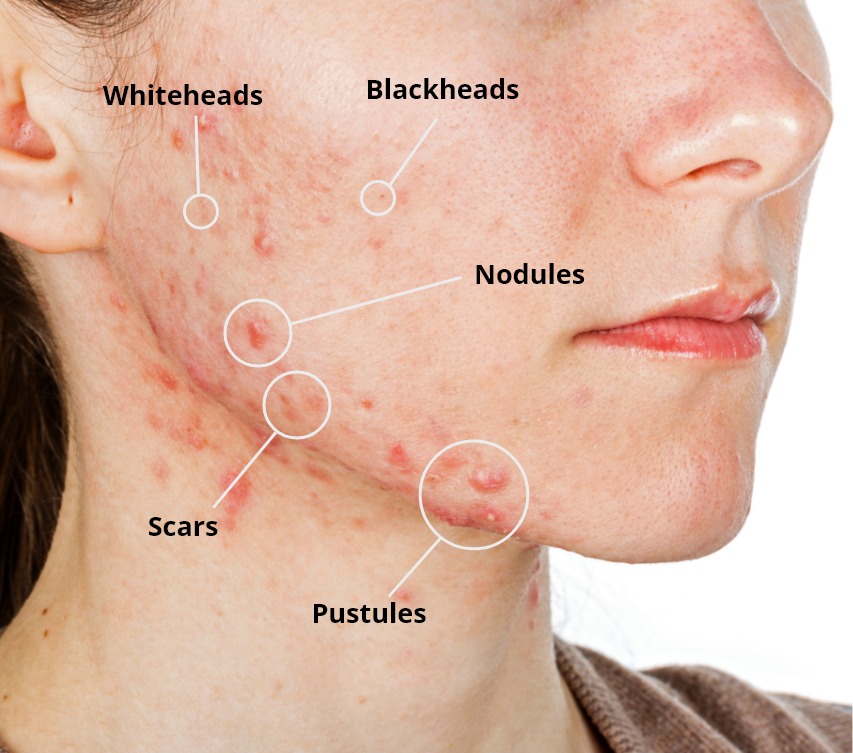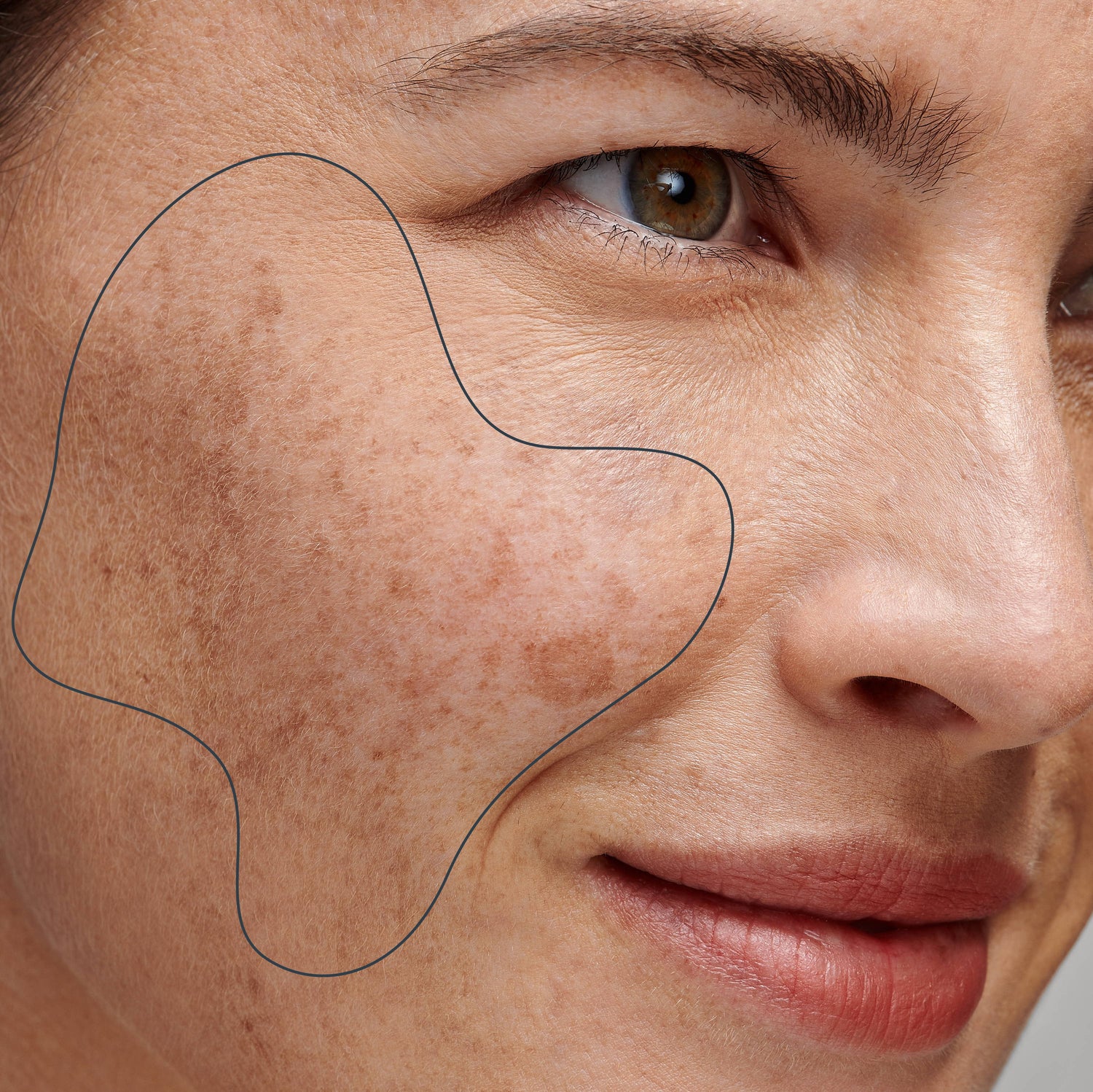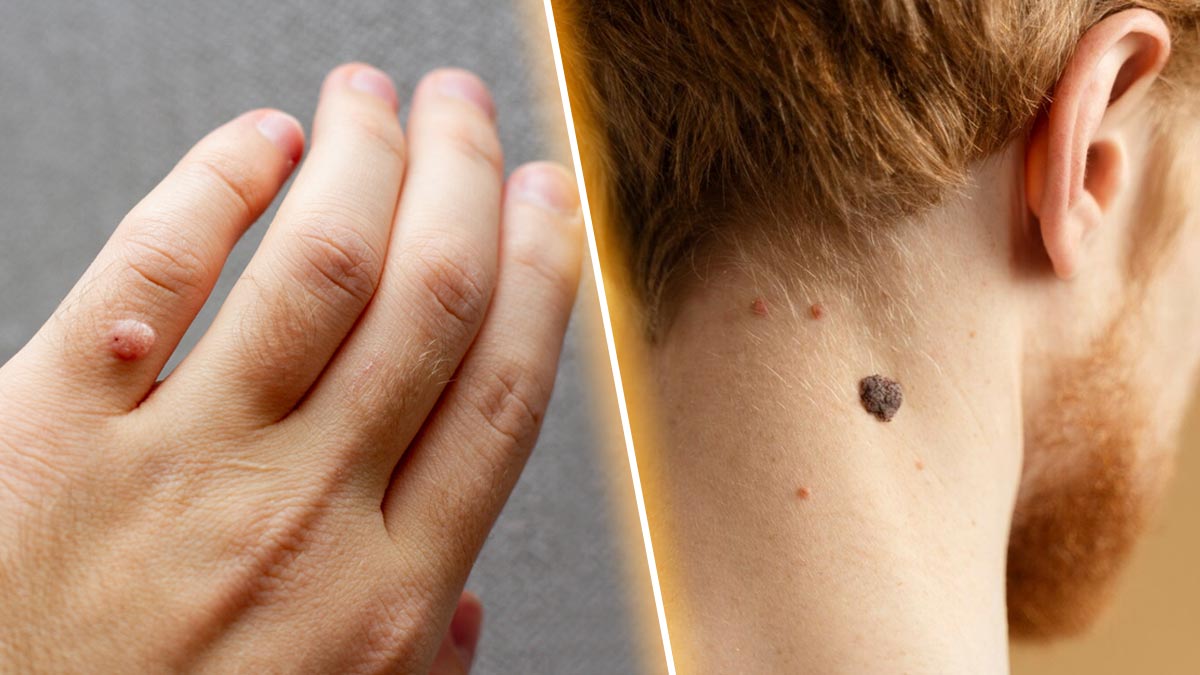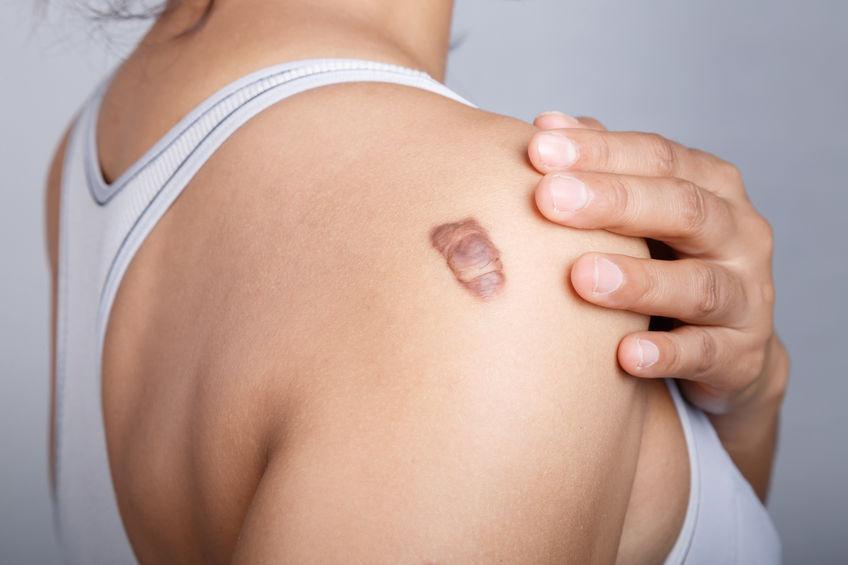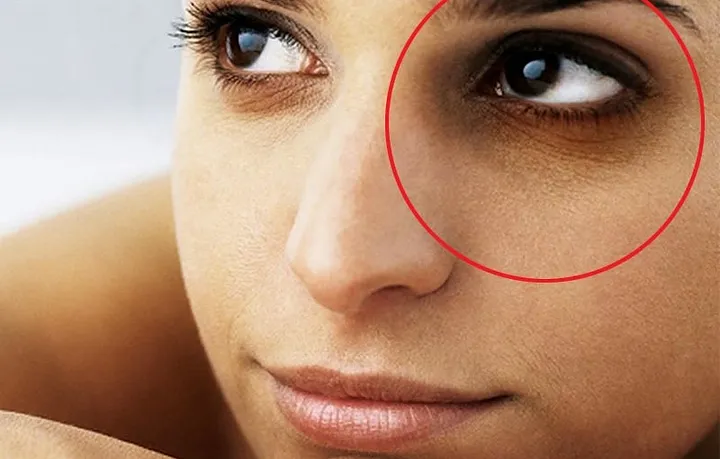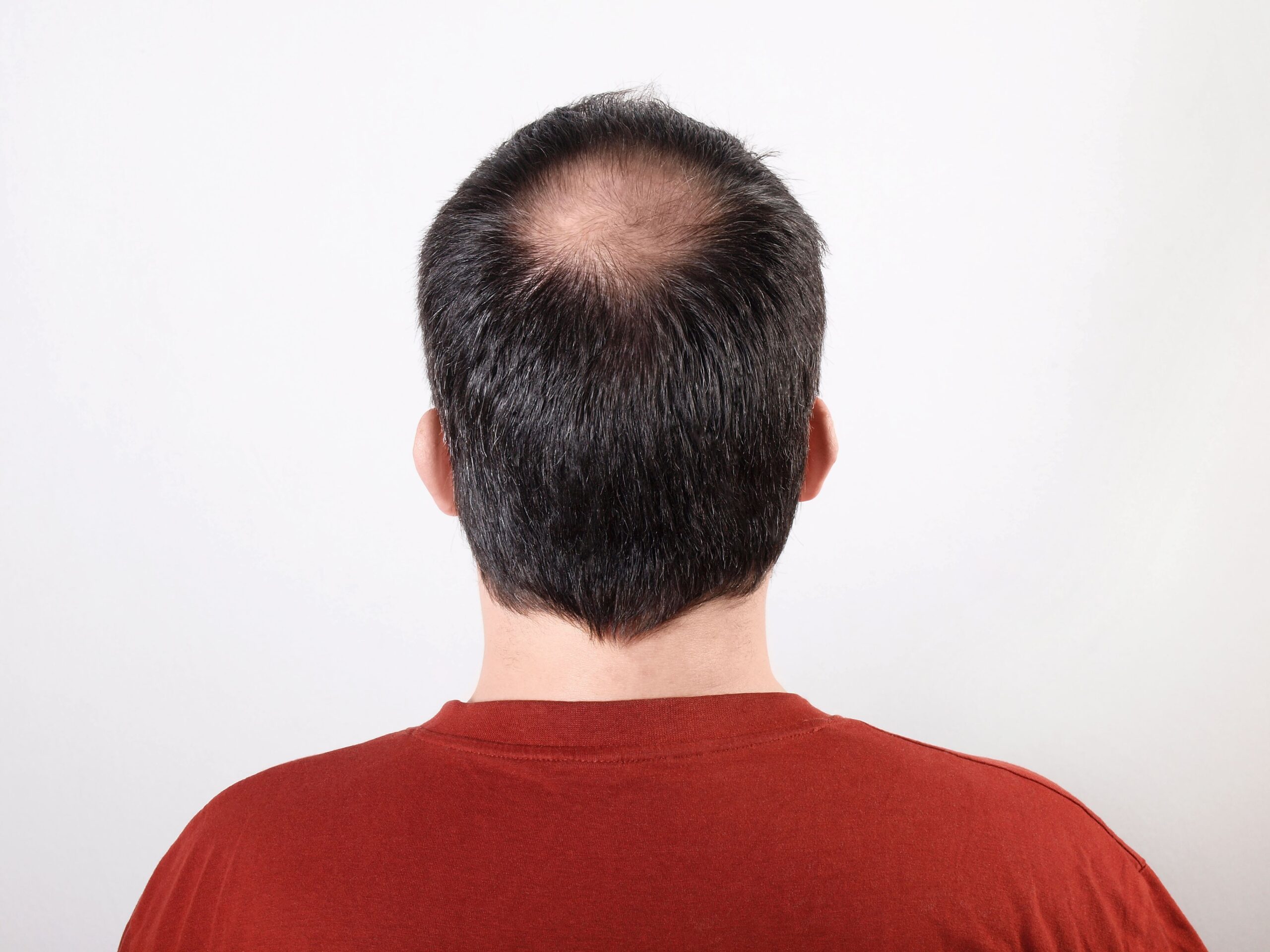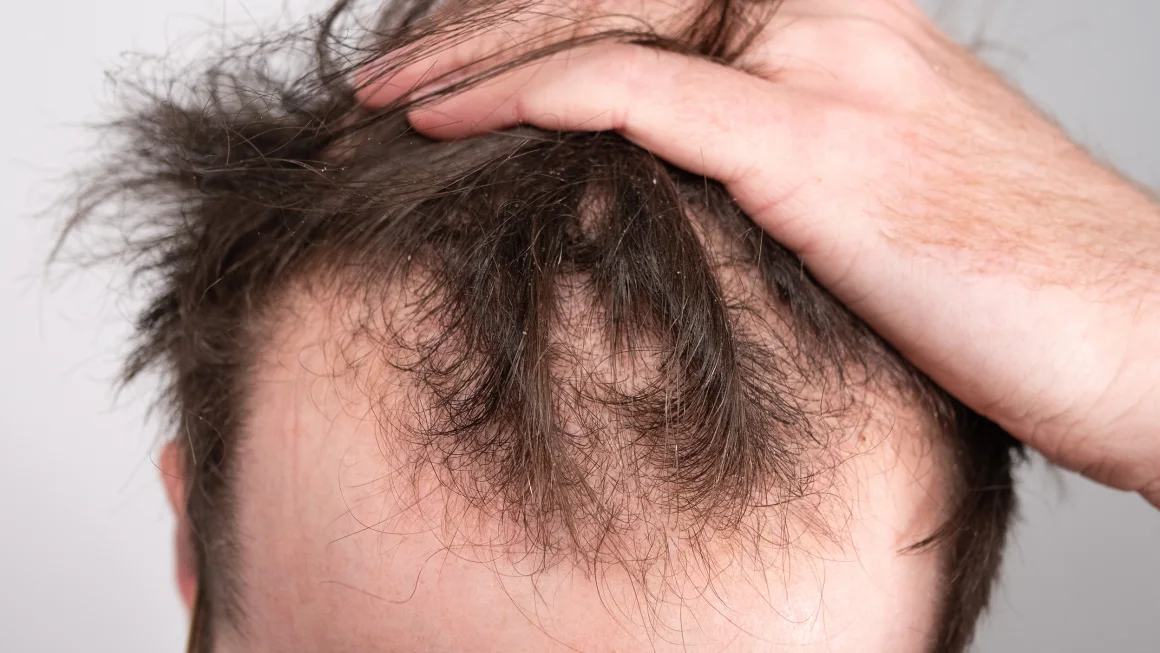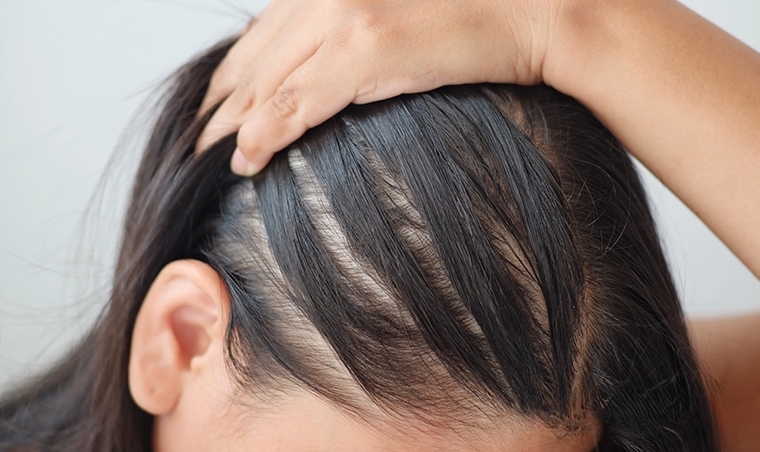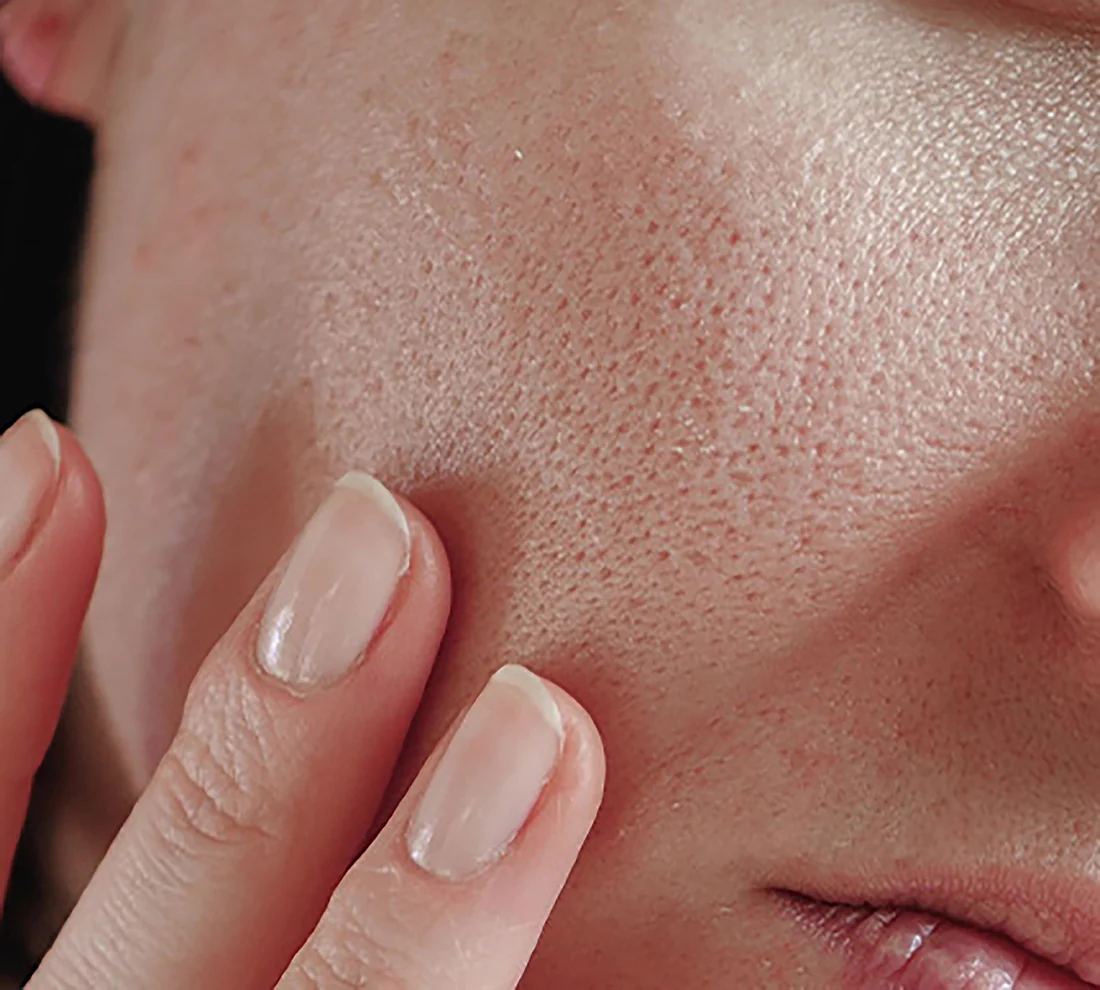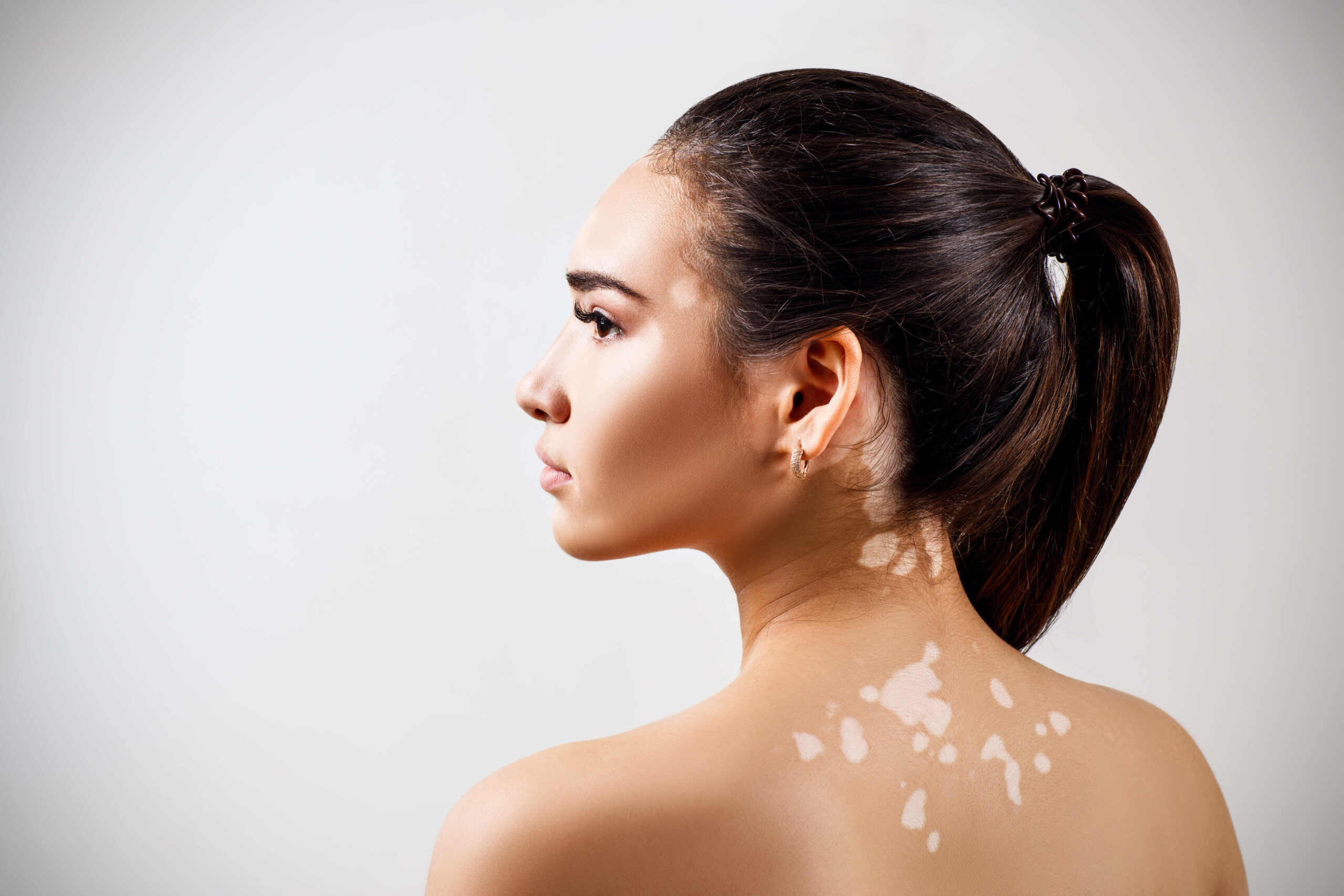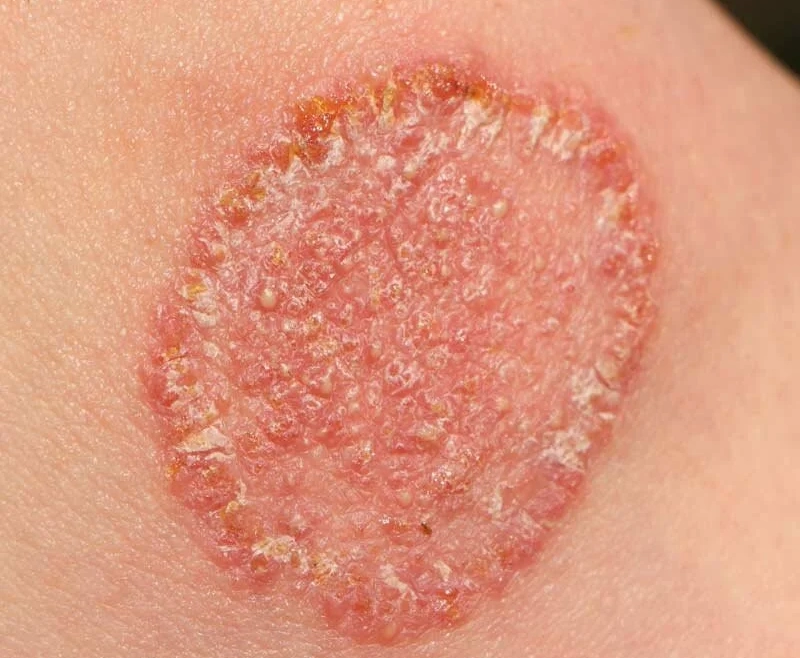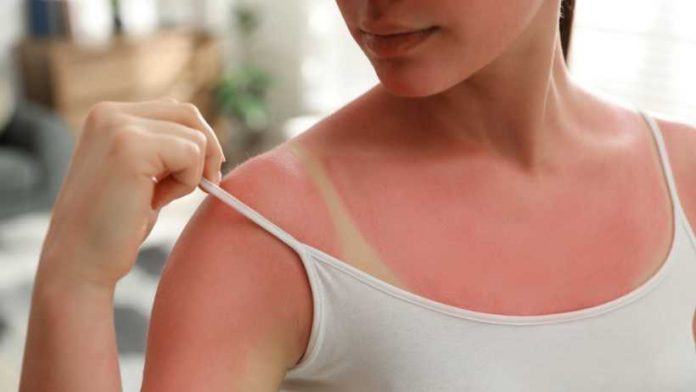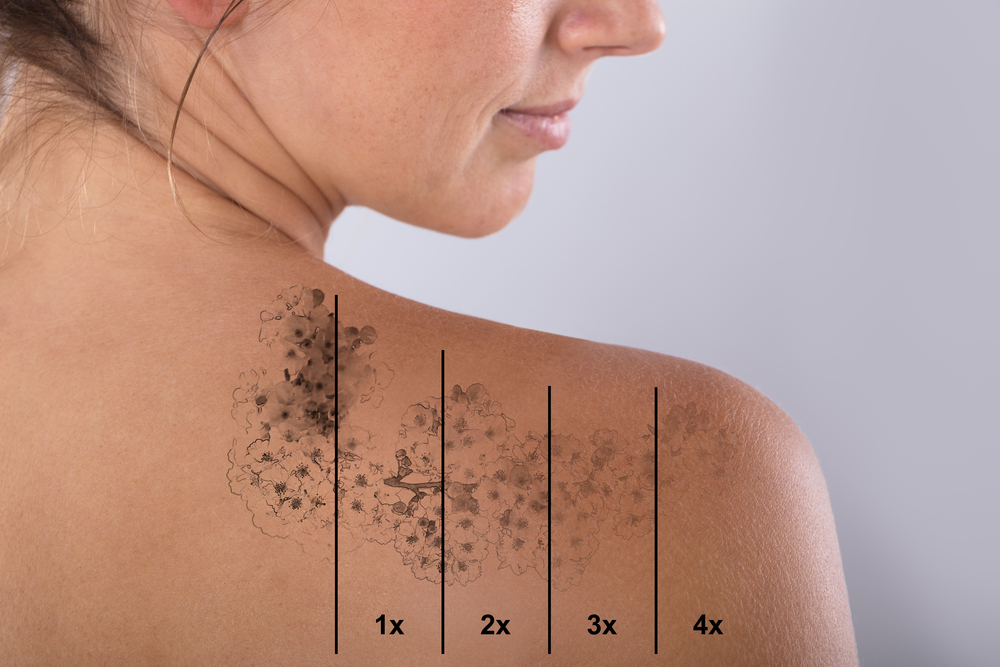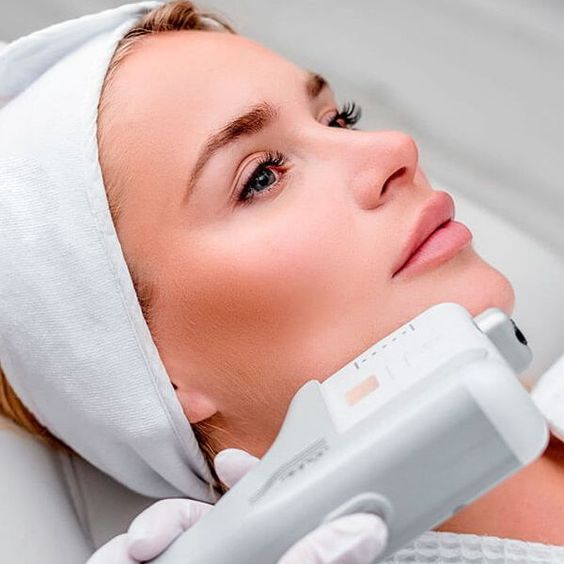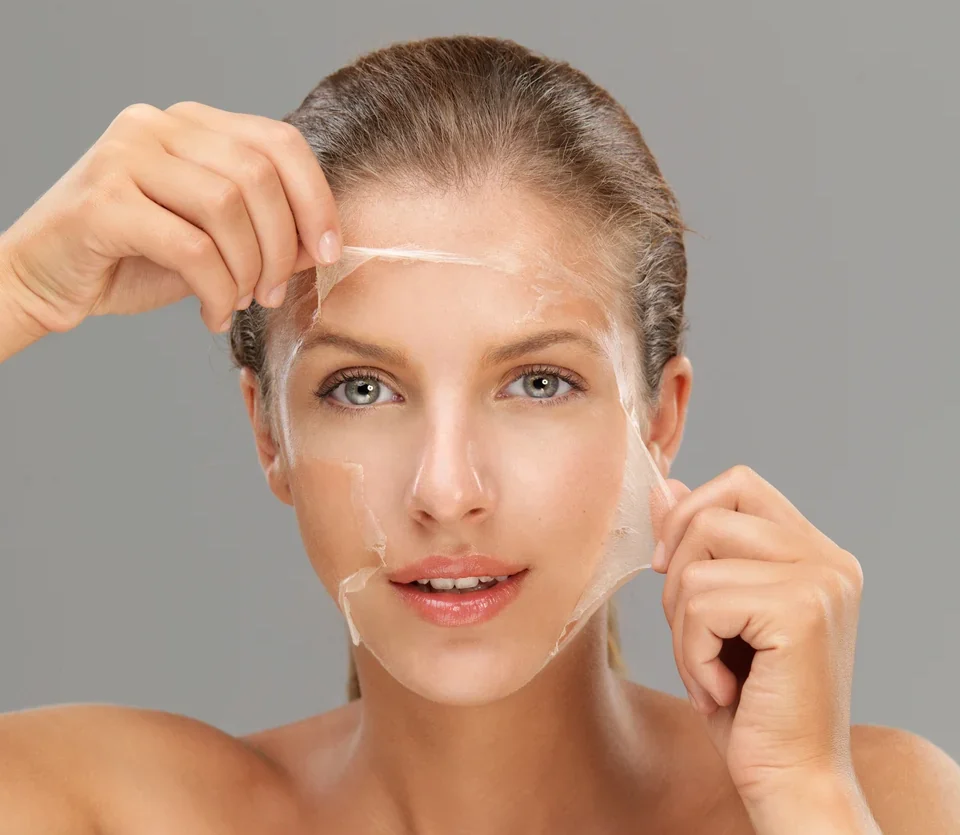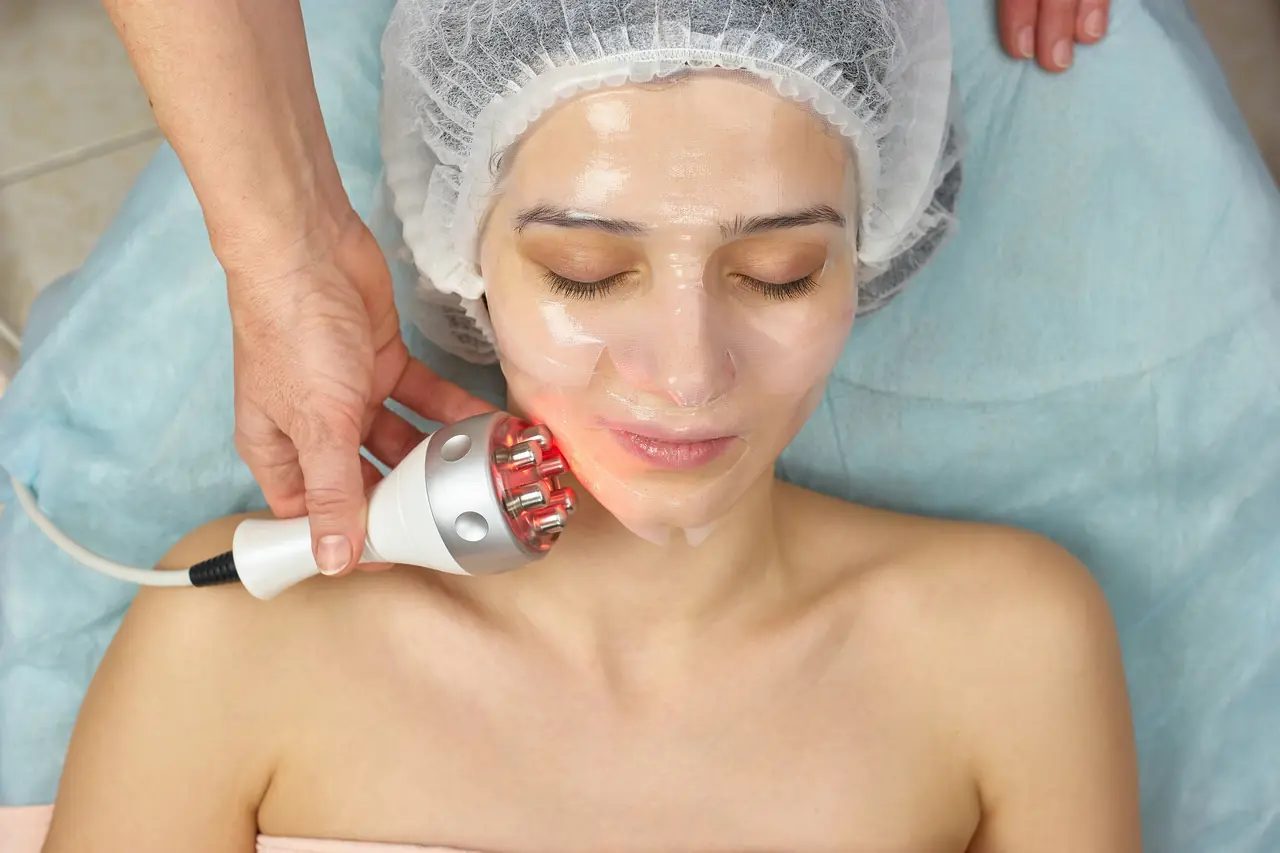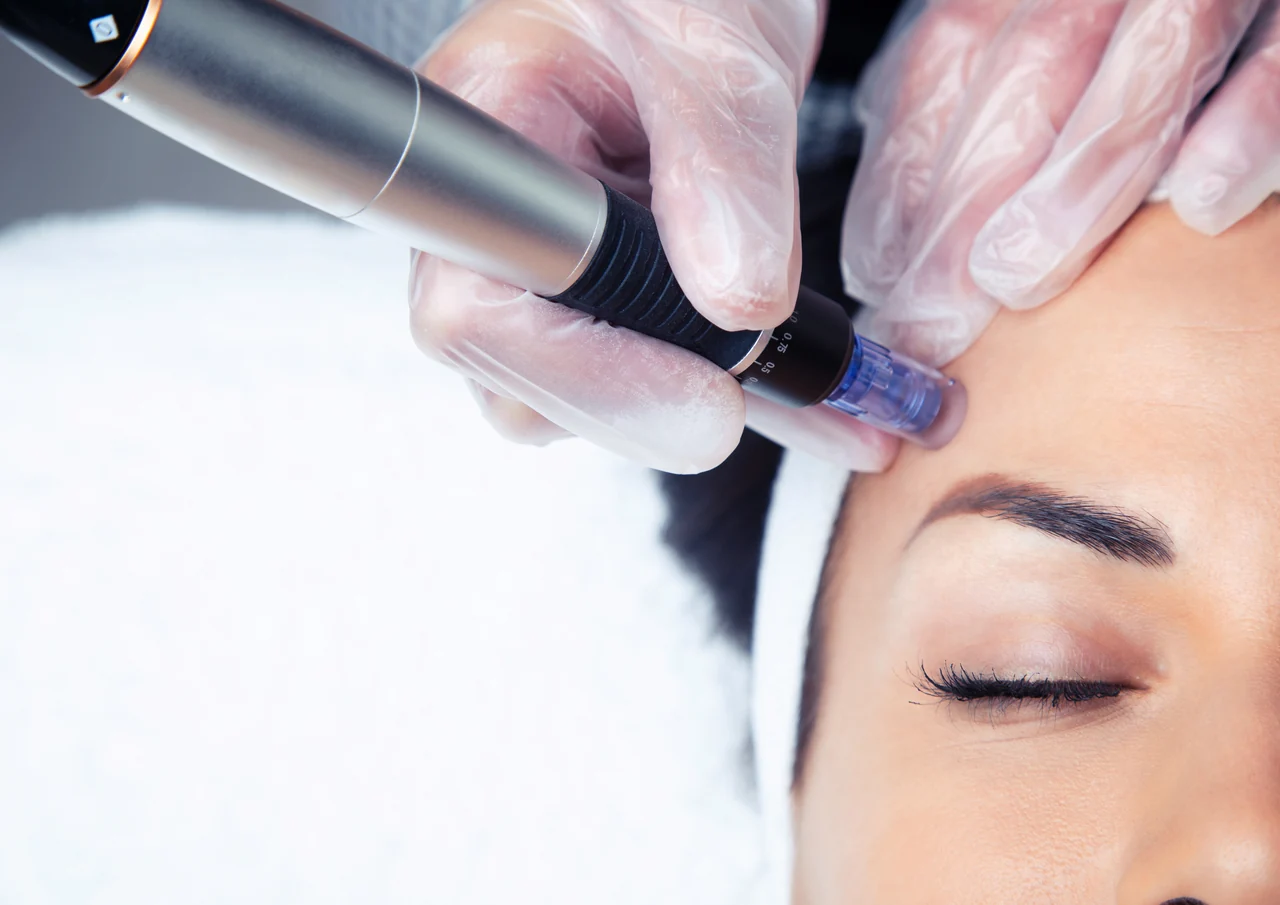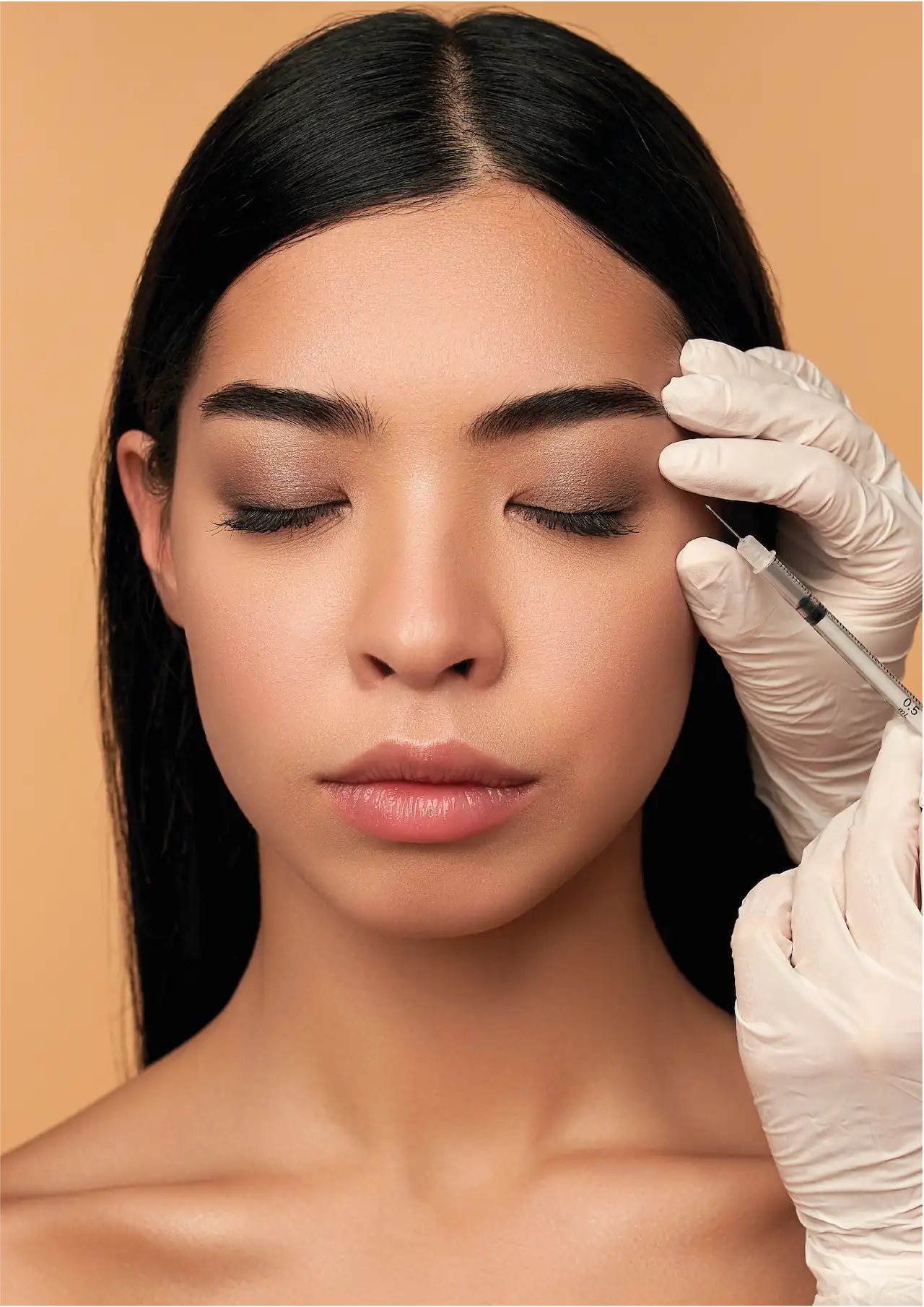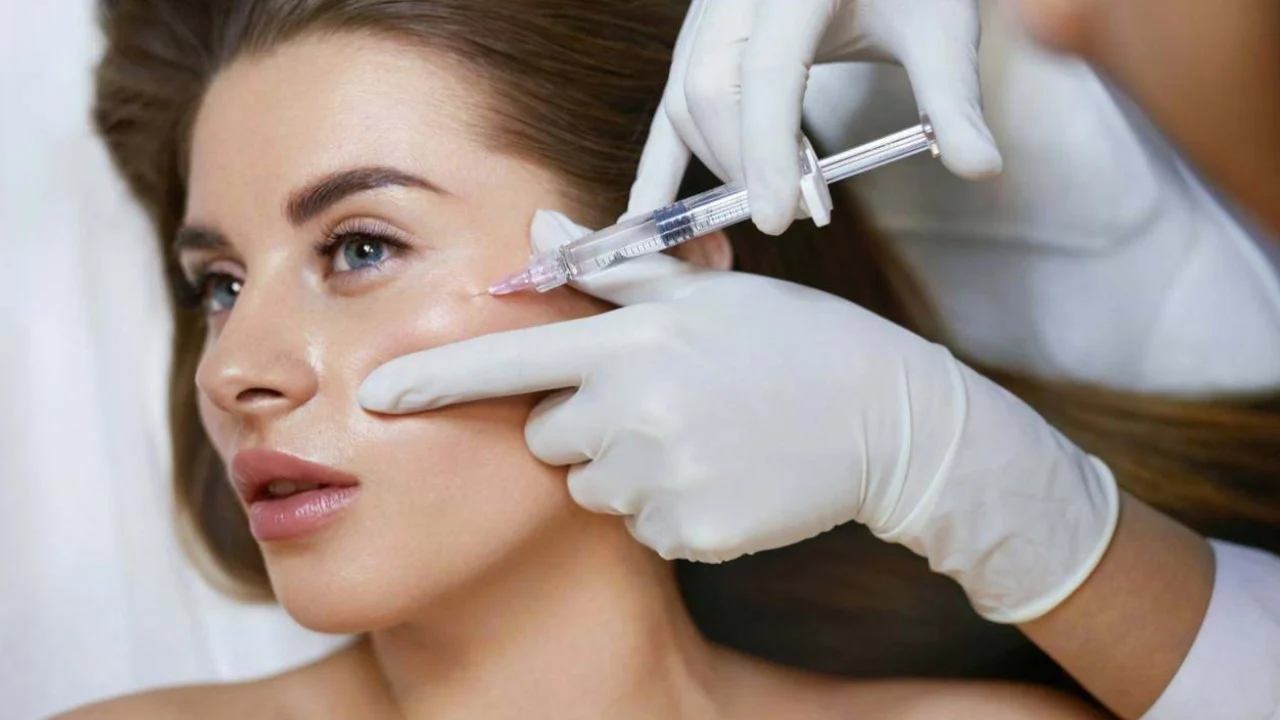Dermatology
@VivaSkintech

Problem Based Categories
ACNE
PIGMENTATION
MELASMA
UNDERARM PIGMENTATION
Add Your Heading Text Here
SCAR
UNWANTED HAIR
KELOID
UNDER EYE DARKNESS
DANDRUFF
HAIR LOSS
HAIR THINNING
OPEN PORES
VITILIGO
FUNGAL INFECTION
SKIN TAN
Treatment Based Categories
MDA
MELASMA REMOVAL
PIGMENTATION REMOVAL
UNDERARM PIGMENTATION
SCAR REMOVAL
LASER HAIR REMOVAL
HIFU
WARTS & SKINTAGS
CHEMICAL PEEL
DERMA ROLLERS
LASER REJUVENATION
VAMPIRE FACIAL
BOTOX
FILLERS
SEMI PERMANENT MAKEUP

Problem Based Categories
acne
What is Acne
Acne is a common skin condition that occurs when hair follicles become clogged with oil and dead skin cells. It often results in whiteheads, blackheads, pimples, and can occur on the face, forehead, chest, upper back, and shoulders. While acne is most common among teenagers, it can affect people of all ages.
Common Types of Acne
- Whiteheads: Closed clogged pores.
- Blackheads: Open clogged pores.
- Papules: Small red, tender bumps.
- Pustules: Pimples with pus at their tips.
- Nodules: Large, painful lumps beneath the skin.
- Cysts: Painful, pus-filled lumps beneath the skin.
Causes of Acne
- Hormonal Changes: Especially during puberty, menstruation, and pregnancy.
- Genetics: Family history can play a significant role.
- Diet: Certain foods can trigger or worsen acne.
- Stress: Can increase the severity of acne.
- Medications: Certain drugs can exacerbate acne.
- Skincare Products: Some products can clog pores.
How We Treat Acne
Our comprehensive acne treatment approach combines advanced technology with personalized care to effectively manage and reduce acne.
- Topical Treatments: Prescription creams and gels that reduce inflammation and bacteria.
- Oral Medications: Antibiotics, birth control pills, or other medications to manage severe cases.
- Laser Therapy: Reduces acne and scars by targeting the bacteria and promoting skin renewal.
- Chemical Peels: Removes dead skin cells and promotes the growth of new, healthier skin.
- Extraction Procedures: Removes blackheads and whiteheads.
- Microneedling: Improves skin texture and reduces scars by stimulating collagen production.
Benefits of Our Acne Treatments
- Clearer Skin: Reduces the severity and frequency of breakouts.
- Improved Skin Texture: Enhances the overall appearance and smoothness of the skin.
- Reduced Scarring: Minimizes the appearance of acne scars.
- Customized Care: Treatments tailored to individual skin types and conditions.
- Boosted Confidence: Clearer skin can significantly improve self-esteem and confidence.
Procedure Overview
- Consultation: Discuss your acne concerns and treatment goals with our specialists.
- Skin Analysis: Detailed examination of your skin to identify the best treatment options.
- Treatment Plan: Customized plan including a combination of therapies for optimal results.
- Ongoing Care: Regular follow-up appointments to monitor progress and adjust treatments as needed.
Post-Care Instructions
- Gentle Skincare: Use non-comedogenic and gentle skincare products.
- Hydration: Drink plenty of water and keep your skin hydrated.
- Avoid Picking: Refrain from picking or squeezing acne to prevent scarring.
- Sun Protection: Use sunscreen daily to protect your skin from harmful UV rays.
- Healthy Diet: Maintain a balanced diet to support overall skin health.
- Follow-Up: Schedule and attend follow-up appointments to ensure continued progress.
Pigmentation
What is Pigmentation?
Pigmentation refers to the coloring of the skin, which is caused by melanin. While melanin is essential for protecting the skin against UV radiation, its overproduction can lead to hyperpigmentation, resulting in dark spots, patches, and uneven skin tone. Pigmentation issues can be caused by various factors including sun exposure, hormonal changes, aging, and skin injuries.
Common Types of Pigmentation Issues
- Melasma: Dark, discolored patches often caused by hormonal changes.
- Sunspots (Solar Lentigines): Flat brown spots that develop due to sun exposure.
- Post-Inflammatory Hyperpigmentation (PIH): Dark spots that form after an injury or inflammation.
- Freckles: Small brown spots typically caused by sun exposure and genetics.
- Age Spots: Also known as liver spots, these appear as flat, brown patches commonly found in older adults.
How We Treat Pigmentation
Our clinic offers a range of advanced treatments to effectively reduce pigmentation and restore an even skin tone.
- Chemical Peels: Exfoliates the top layers of skin, reducing dark spots and promoting new skin growth.
- Laser Therapy: Targets and breaks down melanin deposits in the skin, reducing pigmentation.
- Microdermabrasion: Gently exfoliates the skin, removing the outer layer and improving skin tone.
- Topical Treatments: Prescription creams and serums that lighten dark spots and even out skin tone.
- Microneedling: Stimulates collagen production, improving skin texture and reducing pigmentation.
Benefits of Our Pigmentation Treatments
- Even Skin Tone: Reduces dark spots and patches, resulting in a more uniform complexion.
- Improved Skin Texture: Enhances the overall smoothness and clarity of the skin.
- Boosted Confidence: Achieving an even skin tone can significantly improve self-esteem.
- Safe and Effective: Our treatments are clinically proven and performed by experienced specialists.
- Minimal Downtime: Most treatments involve minimal recovery time, allowing you to resume daily activities quickly.
Procedure Overview
- Consultation: Discuss your pigmentation concerns and treatment goals with our specialists.
- Skin Analysis: Detailed examination of your skin to identify the best treatment options.
- Treatment Plan: Customized plan including a combination of therapies for optimal results.
- Procedure: Performing the selected treatments in a series of sessions.
- Post-Treatment Care: Instructions are provided to ensure optimal healing and results.
Post-Care Instructions
- Avoid Sun Exposure: Protect your skin from direct sunlight and use a high SPF sunscreen daily.
- Gentle Skincare: Use non-comedogenic and gentle skincare products to avoid irritation.
- Hydrate: Drink plenty of water to keep your skin hydrated and support the healing process.
- Follow-Up: Schedule any recommended follow-up appointments to monitor progress and adjust treatments as needed.
- Avoid Picking: Refrain from picking or scratching treated areas to prevent further pigmentation issues.
MELASMA
What is Melasma?
Numerous lasers and light devices have been used in melasma with unsatisfactory results. Besides, lasers are not advisable as monotherapy in the treatment of melasma. Q-switched lasers (QSL), fractional lasers, ablative lasers, intense pulsed lights (IPLS), Chemical peels, and their combinations have all been used, but response is unpredictable. and the pigmentation frequently recurs.
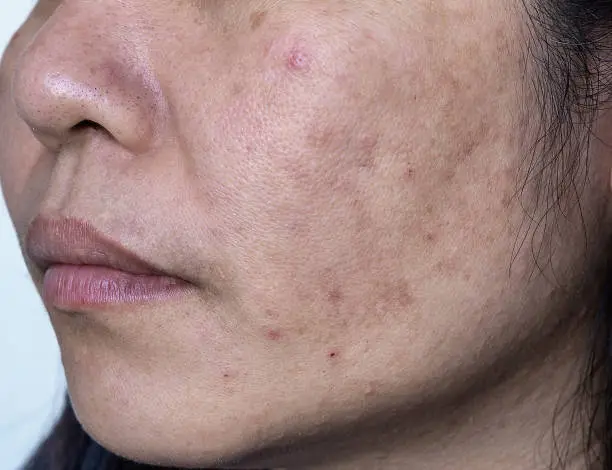
Common Types of Melasma
- Epidermal Melasma: Involves increased melanin in the superficial layers of the skin.
- Dermal Melasma: Characterized by the presence of melanin deeper within the skin.
- Mixed Melasma: A combination of both epidermal and dermal types, with pigment in both layers of the skin.
Causes of Melasma
- Hormonal Changes: Pregnancy, birth control pills, and hormone replacement therapy can trigger melasma.
- Sun Exposure: UV rays stimulate melanocytes, leading to increased melanin production.
- Genetics: Family history can play a significant role in developing melasma.
- Medications: Some medications can cause pigmentation changes as a side effect.
- Skin Care Products: Products that irritate the skin can exacerbate melasma.
Benefits of Our Melasma Treatments
- Effective Results: Noticeable improvement in skin tone and reduction in melasma patches.
- Customized Plans: Treatments tailored to your specific skin type and needs.
- Non-Invasive Options: Minimal downtime and discomfort.
- Advanced Technology: Use of the latest techniques and equipment for optimal results.
- Expert Care: Professional and experienced dermatologists and skincare specialists.
Post-Care Instructions
- Sun Protection: Apply broad-spectrum sunscreen daily and avoid direct sun exposure.
- Gentle Skincare: Use mild, non-irritating products and avoid exfoliants for a few days.
- Hydration: Keep your skin well-moisturized and drink plenty of water.
- Avoid Picking: Do not pick or scratch treated areas to prevent scarring and infection.
- Follow-Up Visits: Attend scheduled follow-up appointments to ensure optimal healing and results.
UNderarm pigmentation
What is Underarm Pigmentation?
For many, dark armpits can be embarrassing. Dark skin under the armpits can prevent you from wearing sleeveless tops, swimwear, or exercising in public. Dark armpits, like scars and discolorations on other parts of the body, can lead to a lack of self-confidence and self-esteem.
Forearm whitening laser treatment uses a Q-switched laser to improve the appearance of dark armpits caused by pigmentation. This safe treatment is non-invasive and visible results are seen in several sessions with minimal downtime and no discomfort. QSwitched Nd: The YAG laser system can effectively target deeper skin pigmentation. This remedy is suitable when armpit pigmentation does not respond to topical whitening creams, epidermal-dermis mixed pigmentation, and primarily skin pigmentation. Laser energy breaks down melanin, which is carried away from the body by a healing reaction in several treatment sessions.
Common Causes of Underarm Pigmentation
- Shaving: Frequent shaving can cause irritation and lead to darkening of the skin.
- Friction: Rubbing of the skin against clothes can result in pigmentation.
- Deodorants and Antiperspirants: Certain chemicals in these products can cause skin darkening.
- Hyperpigmentation Disorders: Conditions like acanthosis nigricans, which is linked to insulin resistance, can cause dark patches.
- Infections: Bacterial or fungal infections can lead to pigmentation changes.
- Hormonal Changes: Pregnancy and hormonal imbalances can also contribute to underarm pigmentation.
Benefits of Our Underarm Pigmentation Treatments
- Effective Results: Noticeable improvement in skin tone and reduction in pigmentation.
- Customized Plans: Treatments tailored to your specific skin type and needs.
- Non-Invasive Options: Minimal downtime and discomfort.
- Advanced Technology: Use of the latest techniques and equipment for optimal results.
- Expert Care: Professional and experienced dermatologists and skincare specialists.
Post-Care Instructions
- Sun Protection: Apply broad-spectrum sunscreen to exposed areas if applicable and avoid direct sun exposure.
- Gentle Skincare: Use mild, non-irritating products and avoid harsh deodorants or antiperspirants.
- Hydration: Keep your skin well-moisturized and drink plenty of water.
- Avoid Friction: Wear loose-fitting clothes to reduce friction in the underarm area.
- Follow-Up Visits: Attend scheduled follow-up appointments to ensure optimal healing and results.
Scar Removal
What is Scar Removal?
Scar removal is a cosmetic procedure aimed at reducing the appearance of scars on the skin. Scars can result from injuries, surgeries, acne, or other skin conditions. While it’s often impossible to completely remove a scar, various treatments can significantly reduce their visibility and improve the skin’s texture and tone.
Fractional CO2 laser is ideal for people who like to minimize the appearance of acne scarring, fine lines, pigmentation, and other skin conditions
Common Causes of Scars
- Injuries: Cuts, burns, and other traumas can lead to scarring as the skin heals.
- Surgery: Surgical procedures often leave behind scars.
- Acne: Severe acne can result in pitted or raised scars.
- Infections: Skin infections can cause scarring as they heal.
- Skin Conditions: Conditions like chickenpox can leave permanent marks on the skin.
Types of Scars
- Hypertrophic Scars: Raised, red scars that form along the original wound.
- Keloid Scars: Thick, raised scars that extend beyond the original wound boundary.
- Atrophic Scars: Depressed scars, often caused by acne or chickenpox.
- Contracture Scars: Scars that tighten the skin, often resulting from burns.
Benefits of Our Scar Removal Treatments
- Effective Results: Significant reduction in the visibility of scars.
- Customized Plans: Treatments tailored to your specific skin type and scar condition.
- Non-Invasive Options: Minimal discomfort and downtime.
- Advanced Technology: Use of the latest techniques and equipment for optimal results.
- Expert Care: Professional and experienced dermatologists and skincare specialists.
Post-Care Instructions
- Keep the Area Clean: Gently clean the treated area and apply prescribed ointments.
- Avoid Sun Exposure: Protect the treated area from direct sunlight and use broad-spectrum sunscreen.
- Hydration: Keep your skin well-moisturized and drink plenty of water.
- Avoid Picking: Do not pick or scratch the treated area to prevent infection and additional scarring.
- Follow-Up Visits: Attend scheduled follow-up appointments to ensure optimal healing and results.
Warts and Skin Tags
What is Warts and Skin Tags?
Warts are small, rough growths caused by the human papillomavirus (HPV) that commonly appear on the hands, feet, and other areas of the body. They are typically harmless but can be unsightly and sometimes uncomfortable.
Skin tags are benign, soft, skin-colored growths that often occur in areas where the skin folds, such as the neck, armpits, groin, and eyelids. They are not dangerous but can be bothersome and aesthetically displeasing.
Common Causes of Warts and Skin Tags
- Warts: Caused by various strains of HPV, which can enter the skin through tiny cuts or abrasions.
- Skin Tags: Often develop due to friction from skin rubbing against skin, clothing, or jewelry. They are more common in people who are overweight, pregnant, or have diabetes.
Types of Warts
- Common Warts: Usually found on the hands and fingers.
- Plantar Warts: Appear on the soles of the feet and can be painful.
- Flat Warts: Smaller and smoother, often appearing on the face or legs.
- Filiform Warts: Long, narrow growths that typically appear on the face.
- Periungual Warts: Found around the nails and can affect nail growth.
Benefits of Our Warts and Skin Tag Removal Treatments
- Quick and Effective: Most procedures are quick and provide immediate results.
- Minimal Discomfort: Modern techniques minimize pain and discomfort.
- Safe and Precise: Treatments are performed by experienced dermatologists, ensuring safety and precision.
- Improved Appearance: Removing warts and skin tags can enhance your skin’s appearance and boost confidence.
- Prevent Recurrence: Effective removal reduces the risk of recurrence.
Post-Care Instructions
- Keep the Area Clean: Gently clean the treated area and apply prescribed ointments.
- Avoid Sun Exposure: Protect the treated area from direct sunlight and use broad-spectrum sunscreen.
- Avoid Scratching: Do not scratch or pick at the treated area to prevent infection and scarring.
- Hydration: Keep your skin well-moisturized and drink plenty of water.
- Follow-Up Visits: Attend scheduled follow-up appointments to ensure proper healing and monitor for recurrence.
Keloid Scar?
What is a Keloid Scar?
Keloid scars are raised, thickened patches of skin that form due to an overgrowth of scar tissue. Unlike typical scars, keloids extend beyond the original wound site and can continue to grow over time. They often develop after injuries, surgeries, piercings, or severe acne. Keloids can occur on any part of the body but are most common on the chest, shoulders, earlobes, and cheeks.
Causes of Keloid Scars
- Genetics: A predisposition to keloid formation can run in families.
- Skin Injuries: Cuts, burns, piercings, tattoos, and surgical incisions.
- Inflammation: Conditions like acne or chickenpox that cause skin inflammation.
- Ethnicity: More common in people with darker skin tones, including African, Asian, and Hispanic ethnicities.
How We Treat Keloid Scars
Our clinic offers a range of advanced treatments to effectively manage and reduce the appearance of keloid scars.
- Corticosteroid Injections: Reduces inflammation and flattens the keloid scar over time.
- Laser Therapy: Uses focused light to reduce the size and color of keloids.
- Cryotherapy: Freezes the keloid tissue, causing it to shrink.
- Surgical Excision: Removes the keloid tissue, often combined with other treatments to prevent recurrence.
- Silicone Sheets and Gels: Applied to the scar to flatten and soften it.
- Pressure Therapy: Special garments apply pressure to the keloid, reducing its size over time.
- Radiation Therapy: Used post-surgery to prevent the keloid from returning.
Benefits of Our Keloid Scar Treatments
- Reduced Scar Size: Effective reduction in the size and thickness of keloid scars.
- Improved Appearance: Lightens the color and smooths the texture of keloid scars.
- Enhanced Comfort: Reduces itching, pain, and discomfort associated with keloids.
- Minimized Recurrence: Advanced techniques to prevent keloids from returning after treatment.
- Customized Care: Treatments tailored to individual skin types and conditions.
Procedure Overview
- Consultation: Discuss your keloid concerns and treatment goals with our specialists.
- Skin Analysis: Detailed examination of your keloids to identify the best treatment options.
- Treatment Plan: Customized plan including a combination of therapies for optimal results.
- Procedure: Performing the selected treatments in a series of sessions.
- Post-Treatment Care: Instructions are provided to ensure optimal healing and results.
Post-Care Instructions
- Avoid Sun Exposure: Protect your skin from direct sunlight and use a high SPF sunscreen.
- Gentle Skincare: Use non-irritating and gentle skincare products.
- Hydration: Drink plenty of water to keep your skin hydrated and support the healing process.
- Avoid Trauma: Refrain from activities that could cause skin injury or irritation.
- Follow-Up: Schedule and attend follow-up appointments to monitor progress and adjust treatments as needed.
Under Eye Darkness
What is Under Eye Darkness?
Under eye darkness, also known as dark circles, is a common cosmetic concern characterized by discoloration or darkening of the skin beneath the eyes. This condition can make individuals appear tired, older, or stressed. Various factors, including genetics, aging, lifestyle, and health conditions, can contribute to the development of dark circles.
Causes of Under Eye Darkness
- Genetics: Family history can play a significant role in the development of dark circles.
- Aging: Thinning skin and loss of fat and collagen can make blood vessels more visible.
- Allergies: Chronic rubbing due to allergies can darken the skin.
- Fatigue: Lack of sleep can cause the skin to become dull and pale, highlighting dark tissues.
- Dehydration: When the body is dehydrated, the skin beneath the eyes can appear sunken and dark.
- Sun Exposure: Increases melanin production, leading to pigmentation in the under-eye area.
How We Treat Under Eye Darkness
Our clinic offers a variety of advanced treatments to effectively reduce the appearance of dark circles and rejuvenate the under-eye area.
- Laser Therapy: Targets pigmentation and stimulates collagen production to brighten the under-eye area.
- Chemical Peels: Lightens dark pigmentation and improves skin texture.
- Microneedling: Promotes collagen production, improving skin thickness and reducing visibility of blood vessels.
- Dermal Fillers: Adds volume and reduces hollowness, making dark circles less noticeable.
- Topical Treatments: Prescription creams containing ingredients like vitamin C, retinoids, and hydroquinone.
- Platelet-Rich Plasma (PRP) Therapy: Uses the patient’s own blood plasma to stimulate healing and rejuvenation of the skin.
Benefits of Our Under Eye Darkness Treatments
- Brighter Appearance: Reduces discoloration and brightens the under-eye area.
- Youthful Look: Improves skin texture and volume, giving a more youthful appearance.
- Boosted Confidence: Enhances overall facial aesthetics, boosting self-esteem.
- Non-Invasive Options: Many treatments are non-invasive with minimal discomfort.
- Long-Lasting Results: Significant improvements that can last for several months.
Procedure Overview
- Consultation: Discuss your concerns and treatment goals with our specialists.
- Skin Analysis: Detailed examination of the under-eye area to identify the best treatment options.
- Treatment Plan: Customized plan including a combination of therapies for optimal results.
- Procedure: Performing the selected treatments in a series of sessions.
- Post-Treatment Care: Instructions are provided to ensure optimal healing and results.
Post-Care Instructions
- Avoid Sun Exposure: Protect your skin from direct sunlight and use a high SPF sunscreen.
- Gentle Skincare: Use non-irritating and gentle skincare products.
- Hydrate: Drink plenty of water to keep your skin hydrated and support the healing process.
- Avoid Rubbing: Refrain from rubbing or touching the treated area to prevent irritation.
- Follow-Up: Schedule any recommended follow-up appointments to monitor progress and adjust treatments as needed.
Dandruff
Causes of Dandruff
- Dry Skin: The most common cause, leading to small, dry flakes.
- Seborrheic Dermatitis: An inflammatory skin condition causing oily, white or yellowish scales.
- Malassezia: A yeast-like fungus that lives on the scalp and can trigger dandruff in some people.
- Skin Conditions: Psoriasis and eczema can contribute to dandruff.
- Hair Care Products: Sensitivity to certain hair products can cause contact dermatitis.
- Diet: Lack of nutrients like zinc, vitamins, and essential fatty acids.
- Stress: Can exacerbate dandruff symptoms.
- Hormonal Changes: Can influence sebaceous gland activity.
How We Treat Dandruff
Our clinic offers a variety of advanced treatments to effectively manage and reduce dandruff.
- Medicated Shampoos: Formulated with ingredients like ketoconazole, selenium sulfide, or zinc pyrithione to combat fungi and reduce flaking.
- Scalp Treatments: Professional scalp treatments that exfoliate and hydrate the scalp.
- Topical Steroids: Reduce inflammation and itching.
- Antifungal Treatments: Combat fungal overgrowth on the scalp.
- Light Therapy: Uses UV light to reduce fungal populations and inflammation.
- Dietary Recommendations: Nutritional advice to address underlying deficiencies.
- Stress Management: Techniques to reduce stress and its impact on dandruff.
Benefits of Our Dandruff Treatments
- Reduced Flaking: Noticeable reduction in scalp flaking.
- Relief from Itching: Alleviation of itching and discomfort.
- Healthier Scalp: Improved scalp health and moisture balance.
- Enhanced Hair Appearance: Hair looks cleaner and more vibrant.
- Personalized Care: Treatments tailored to individual needs and scalp conditions.
Procedure Overview
- Consultation: Discuss your dandruff concerns and treatment goals with our specialists.
- Scalp Analysis: Detailed examination of your scalp to identify the best treatment options.
- Treatment Plan: Customized plan including a combination of therapies for optimal results.
- Procedure: Performing the selected treatments in a series of sessions.
- Post-Treatment Care: Instructions are provided to ensure optimal results and prevent recurrence.
Post-Care Instructions
- Use Medicated Shampoos: Follow the recommended regimen for medicated shampoos.
- Avoid Irritants: Stay away from hair products that can irritate the scalp.
- Maintain Scalp Hygiene: Regularly wash your hair to keep the scalp clean.
- Hydrate: Drink plenty of water to keep your scalp hydrated.
- Healthy Diet: Incorporate a balanced diet rich in essential nutrients.
- Manage Stress: Practice stress-reducing activities like meditation or exercise.
Baldness
What is Baldness?
Baldness, also known as alopecia, is a condition where a person experiences significant hair loss, leading to partial or complete lack of hair on the scalp or other parts of the body. The most common type of baldness is androgenetic alopecia, also known as male or female pattern baldness. It can affect both men and women, often leading to psychological distress due to changes in appearance.
Causes of Baldness
- Genetics: Family history of baldness can predispose individuals to hair loss.
- Hormonal Changes: Androgens play a significant role in androgenetic alopecia.
- Medical Conditions: Thyroid disorders, autoimmune diseases, and scalp infections.
- Medications: Drugs used for cancer, arthritis, depression, heart problems, and high blood pressure.
- Radiation Therapy: Treatments for cancer can lead to hair loss.
- Stress: Physical or emotional stress can cause temporary hair loss.
- Nutritional Deficiencies: Lack of essential nutrients like iron, protein, and vitamins.
How We Treat Baldness
Our clinic offers a range of advanced treatments to effectively manage and reduce hair loss, promoting hair regrowth.
- Medications: FDA-approved treatments like minoxidil (Rogaine) and finasteride (Propecia) to slow hair loss and stimulate regrowth.
- PRP Therapy: Platelet-rich plasma injections that promote hair growth by using the patient’s own blood components.
- Hair Transplantation: Surgical procedure that moves hair follicles from one part of the body to the balding areas.
- Laser Therapy: Low-level laser therapy (LLLT) to stimulate hair follicles and encourage hair growth.
- Microneedling: Promotes hair growth by creating tiny punctures in the scalp, encouraging the production of new hair cells.
- Nutritional Counseling: Personalized dietary plans to address deficiencies that may contribute to hair loss.
- Scalp Treatments: Specialized treatments to improve scalp health and support hair growth.
Benefits of Our Baldness Treatments
- Promotes Hair Regrowth: Effective stimulation of hair follicles to encourage new hair growth.
- Reduces Hair Loss: Slows down the process of hair thinning and loss.
- Improved Scalp Health: Enhances the condition of the scalp, creating a better environment for hair growth.
- Boosted Confidence: Restores hair volume and density, improving self-esteem.
- Customized Solutions: Treatments tailored to individual hair loss patterns and causes.
Procedure Overview
- Consultation: Discuss your hair loss concerns and treatment goals with our specialists.
- Scalp Analysis: Detailed examination of your scalp and hair to identify the best treatment options.
- Treatment Plan: Customized plan including a combination of therapies for optimal results.
- Procedure: Performing the selected treatments in a series of sessions.
- Post-Treatment Care: Instructions are provided to ensure optimal results and maintain hair health.
Post-Care Instructions
- Follow Treatment Regimen: Adhere to the prescribed treatment schedule for medications and therapies.
- Gentle Hair Care: Use mild shampoos and avoid harsh treatments that can damage hair.
- Hydrate: Drink plenty of water to keep your scalp and hair hydrated.
- Balanced Diet: Maintain a diet rich in essential nutrients to support hair health.
- Avoid Stress: Practice stress-reducing activities like meditation, yoga, or exercise.
- Follow-Up: Schedule and attend follow-up appointments to monitor progress and adjust treatments as needed.
Hair Loss
What is Hair Loss?
Hair loss, medically known as alopecia, is a common condition characterized by the gradual or sudden thinning or loss of hair from the scalp or other parts of the body. It can affect men, women, and children of all ages and may be temporary or permanent. Hair loss can have various causes, including genetics, hormonal changes, medical conditions, medications, and lifestyle factors.
Causes of Hair Loss
- Androgenetic Alopecia: Also known as male or female pattern baldness, it is the most common cause of hair loss and is often hereditary.
- Medical Conditions: Thyroid disorders, autoimmune diseases, scalp infections, and hormonal imbalances.
- Medications: Drugs used for cancer, arthritis, depression, heart problems, and high blood pressure.
- Nutritional Deficiencies: Lack of essential nutrients like iron, protein, and vitamins.
- Stress: Physical or emotional stress can lead to temporary hair loss.
- Age: Natural aging process can cause hair to become thinner and more prone to shedding.
- Hairstyling Habits: Tight hairstyles, excessive heat, and chemical treatments can damage hair follicles.
- Pregnancy and Menopause: Hormonal changes during pregnancy and menopause can lead to hair loss in women.
How We Treat Hair Loss
Our clinic offers a range of advanced treatments to effectively manage and reduce hair loss, promoting hair regrowth.
- Medications: FDA-approved treatments like minoxidil (Rogaine) and finasteride (Propecia) to slow hair loss and stimulate regrowth.
- PRP Therapy: Platelet-rich plasma injections that promote hair growth by using the patient’s own blood components.
- Hair Transplantation: Surgical procedure that moves hair follicles from one part of the body to the balding areas.
- Laser Therapy: Low-level laser therapy (LLLT) to stimulate hair follicles and encourage hair growth.
- Microneedling: Promotes hair growth by creating tiny punctures in the scalp, encouraging the production of new hair cells.
- Nutritional Counseling: Personalized dietary plans to address deficiencies that may contribute to hair loss.
- Scalp Treatments: Specialized treatments to improve scalp health and support hair growth.
Benefits of Our Hair Loss Treatments
- Promotes Hair Regrowth: Effective stimulation of hair follicles to encourage new hair growth.
- Reduces Hair Loss: Slows down the process of hair thinning and loss.
- Improved Scalp Health: Enhances the condition of the scalp, creating a better environment for hair growth.
- Boosted Confidence: Restores hair volume and density, improving self-esteem.
- Customized Solutions: Treatments tailored to individual hair loss patterns and causes.
Procedure Overview
- Consultation: Discuss your hair loss concerns and treatment goals with our specialists.
- Scalp Analysis: Detailed examination of your scalp and hair to identify the best treatment options.
- Treatment Plan: Customized plan including a combination of therapies for optimal results.
- Procedure: Performing the selected treatments in a series of sessions.
- Post-Treatment Care: Instructions are provided to ensure optimal results and maintain hair health.
Post-Care Instructions
- Follow Treatment Regimen: Adhere to the prescribed treatment schedule for medications and therapies.
- Gentle Hair Care: Use mild shampoos and avoid harsh treatments that can damage hair.
- Hydrate: Drink plenty of water to keep your scalp and hair hydrated.
- Balanced Diet: Maintain a diet rich in essential nutrients to support hair health.
- Avoid Stress: Practice stress-reducing activities like meditation, yoga, or exercise.
- Follow-Up: Schedule and attend follow-up appointments to monitor progress and adjust treatments as needed.
Hair Thinning
What is Hair Thinning
Hair thinning is a common condition characterized by a reduction in hair density and thickness. It can affect both men and women and may occur gradually or suddenly. Hair thinning can be a distressing experience, impacting self-confidence and overall well-being. Understanding the causes and available treatments is essential for managing this condition effectively.
Causes of Hair Thinning
- Genetics: Family history of hair thinning or baldness (androgenetic alopecia).
- Hormonal Changes: Fluctuations in hormone levels, such as during puberty, pregnancy, or menopause.
- Aging: Natural aging process can lead to thinner, weaker hair.
- Nutritional Deficiencies: Lack of essential nutrients like iron, protein, and vitamins.
- Stress: Physical or emotional stress can disrupt the hair growth cycle.
- Medical Conditions: Thyroid disorders, autoimmune diseases, and scalp infections.
- Medications: Certain drugs used for cancer, arthritis, depression, and high blood pressure can cause hair thinning as a side effect.
- Hairstyling Habits: Excessive heat styling, tight hairstyles, and chemical treatments can damage hair follicles.
How We Treat Hair Thinning
Our clinic offers a range of advanced treatments to effectively manage and reduce hair thinning, promoting thicker, healthier hair growth.
- Medications: FDA-approved treatments like minoxidil (Rogaine) and finasteride (Propecia) to slow hair thinning and stimulate regrowth.
- PRP Therapy: Platelet-rich plasma injections that promote hair growth by using the patient’s own blood components.
- Hair Growth Supplements: Nutritional supplements containing vitamins, minerals, and amino acids to support hair health.
- Laser Therapy: Low-level laser therapy (LLLT) to stimulate hair follicles and encourage thicker hair growth.
- Scalp Treatments: Specialized treatments to improve scalp health and create an optimal environment for hair growth.
- Hair Care Products: Shampoos, conditioners, and serums formulated with ingredients to strengthen and thicken hair strands.
- Lifestyle Modifications: Stress management techniques, dietary changes, and adjustments to hairstyling habits.
Benefits of Our Hair Thinning Treatments
- Thicker, Fuller Hair: Promotes thicker, denser hair growth for a more voluminous appearance.
- Reduced Hair Thinning: Slows down the process of hair thinning and loss.
- Improved Scalp Health: Enhances the condition of the scalp, supporting healthy hair growth.
- Boosted Confidence: Restores hair density and thickness, improving self-esteem.
- Customized Solutions: Tailored treatments based on individual hair thinning patterns and causes.
Procedure Overview
- Consultation: Discuss your hair thinning concerns and treatment goals with our specialists.
- Scalp Analysis: Detailed examination of your scalp and hair to identify the best treatment options.
- Treatment Plan: Customized plan including a combination of therapies for optimal results.
- Procedure: Performing the selected treatments in a series of sessions.
- Post-Treatment Care: Instructions are provided to ensure optimal results and maintain hair health.
Post-Care Instructions
- Follow Treatment Regimen: Adhere to the prescribed treatment schedule for medications and therapies.
- Gentle Hair Care: Use mild shampoos and avoid harsh treatments that can damage hair.
- Hydrate: Drink plenty of water to keep your scalp and hair hydrated.
- Balanced Diet: Maintain a diet rich in essential nutrients to support hair health.
- Stress Reduction: Practice stress-reducing activities like meditation, yoga, or exercise.
- Follow-Up: Schedule and attend follow-up appointments to monitor progress and adjust treatments as needed.
Open Pores
What are Open Pores?
Open pores, also known as enlarged pores, refer to visible and larger pores on the skin’s surface, especially on the face. They are more noticeable in areas where oil glands are more abundant, such as the nose, cheeks, and forehead. Open pores can be a cosmetic concern, contributing to an uneven skin texture and making the skin appear rough and aged.
Causes of Open Pores
- Genetics: Some individuals are predisposed to having larger pores due to their genetic makeup.
- Excessive Sebum Production: Overactive oil glands can lead to clogged pores and enlarged openings.
- Age: As we age, the skin loses its elasticity and firmness, causing pores to appear larger.
- Sun Damage: Prolonged sun exposure can weaken collagen fibers, contributing to pore enlargement.
- Poor Skincare Habits: Not cleansing the skin properly can lead to the accumulation of dirt, oil, and debris, which can stretch pores.
- Hormonal Changes: Fluctuations in hormone levels, such as during puberty or pregnancy, can affect pore size.
- Cosmetics: Certain makeup and skincare products can clog pores and make them appear larger.
- Acne: Inflammatory acne can stretch pores and leave them enlarged even after the acne has healed.
How We Treat Open Pores
Our clinic offers various advanced treatments to minimize and tighten open pores, promoting smoother, more refined skin texture.
- Topical Treatments: Prescription creams containing retinoids or alpha hydroxy acids to exfoliate and unclog pores.
- Chemical Peels: Exfoliating treatments that remove dead skin cells and tighten pores.
- Microdermabrasion: Mechanical exfoliation to remove outer layers of skin and improve pore appearance.
- Laser Therapy: Fractional laser treatments to stimulate collagen production and tighten pores.
- Microneedling: Creates tiny punctures in the skin to promote collagen production and reduce pore size.
- Radiofrequency (RF) Treatments: Heat-based treatments that tighten the skin and reduce pore size.
- Dermaplaning: Manual exfoliation technique to remove dead skin cells and improve skin texture.
- Medical-Grade Skincare: Customized skincare regimens to address specific concerns and minimize pore size.
Benefits of Our Open Pore Treatments
- Minimized Pore Size: Visible reduction in pore size and appearance.
- Smoother Skin Texture: Improved skin texture and tone.
- Enhanced Skin Radiance: Increased brightness and luminosity of the skin.
- Youthful Appearance: Tighter, firmer skin with a more youthful appearance.
- Customized Solutions: Tailored treatments based on individual skin concerns and goals.
Procedure Overview
- Consultation: Discuss your open pore concerns and treatment goals with our skincare specialists.
- Skin Analysis: Detailed examination of your skin to assess pore size, texture, and other factors.
- Treatment Plan: Customized plan including a combination of therapies for optimal results.
- Procedure: Performing the selected treatments in a series of sessions.
- Post-Treatment Care: Instructions are provided to ensure optimal results and maintain skin health.
Post-Care Instructions
- Follow Skincare Regimen: Adhere to the prescribed skincare routine to maintain results.
- Use Sunscreen: Protect the skin from sun damage by applying sunscreen daily.
- Avoid Harsh Products: Use gentle skincare products that won’t irritate the skin or clog pores.
- Stay Hydrated: Drink plenty of water to keep the skin hydrated and plump.
- Regular Maintenance: Schedule periodic treatments to maintain results and prevent pore enlargement.
vitiligo
What is Vitiligo?
Vitiligo is a skin condition characterized by the loss of pigment in certain areas of the skin, resulting in white patches. It occurs when melanocytes, the cells responsible for producing melanin (the pigment that gives skin its color), are destroyed or stop functioning. Vitiligo can affect any part of the body, and while it is not contagious or life-threatening, it can have significant psychological and emotional impacts on those affected.
Causes of Vitiligo
- Autoimmune Disorders: Vitiligo is often associated with autoimmune diseases, where the body’s immune system mistakenly attacks and destroys melanocytes.
- Genetics: Family history of vitiligo increases the risk of developing the condition.
- Trigger Factors: Certain factors such as stress, sunburn, exposure to certain chemicals, or trauma to the skin may trigger or exacerbate vitiligo.
- Neurochemical Factors: Some researchers suggest that neurochemicals released by nerve endings in the skin may contribute to the destruction of melanocytes.
- Viral Infections: Some viral infections may trigger an autoimmune response that leads to vitiligo.
How We Treat Vitiligo
While there is no cure for vitiligo, various treatment options are available to manage the condition and restore pigment to the affected areas.
- Topical Treatments: Corticosteroid creams or ointments applied to the affected areas to reduce inflammation and promote repigmentation.
- Phototherapy: Narrowband UVB phototherapy involves exposing the skin to UVB light to stimulate melanocyte activity and repigmentation.
- Excimer Laser Therapy: Targeted UVB light therapy delivered by a specialized laser to repigment specific areas of the skin.
- Topical Calcineurin Inhibitors: Creams or ointments that suppress the immune response and promote repigmentation.
- Depigmentation: In cases of extensive vitiligo, depigmentation therapy may be an option to lighten the unaffected skin to match the white patches.
- Surgical Treatments: Options include skin grafting, micropigmentation, or melanocyte transplantation to transplant pigment-producing cells to the affected areas.
Management of Vitiligo
In addition to medical treatments, certain lifestyle and skincare practices can help manage vitiligo and minimize its impact:
- Sun Protection: Protecting the skin from sun exposure with sunscreen, protective clothing, and avoiding prolonged sun exposure can prevent sunburn and minimize contrast between pigmented and depigmented areas.
- Cosmetic Camouflage: Cosmetics such as concealers or makeup can be used to cover up white patches and improve confidence.
- Emotional Support: Seeking support from friends, family, or support groups can help individuals cope with the emotional impact of vitiligo.
- Regular Follow-Up: Regular visits to a dermatologist or healthcare provider for monitoring and adjustment of treatment plans as needed.
Benefits of Our Vitiligo Treatments
- Repigmentation: Stimulate melanocyte activity and promote repigmentation of the affected areas.
- Improved Appearance: Restore pigment to the skin, reducing the visibility of white patches.
- Enhanced Confidence: Boost self-esteem and confidence by improving the appearance of vitiligo-affected skin.
- Customized Approach: Tailored treatment plans based on the severity, location, and individual needs of each patient.
Procedure Overview
- Consultation: Comprehensive evaluation of the patient’s vitiligo, medical history, and treatment goals.
- Skin Analysis: Examination of the affected areas to determine the extent and severity of vitiligo.
- Treatment Plan: Personalized treatment plan outlining the recommended therapies and expected outcomes.
- Treatment Sessions: Administering the selected treatments over a series of sessions, with adjustments made as needed.
- Follow-Up Care: Regular follow-up appointments to monitor progress, address any concerns, and modify treatment plans if necessary.
Post-Treatment Care
- Sun Protection: Use sunscreen with a high SPF to protect repigmented areas from sun damage.
- Skincare Maintenance: Follow a gentle skincare routine to keep the skin hydrated and healthy.
- Regular Follow-Up: Attend scheduled follow-up appointments to monitor progress and adjust treatment as needed.
fungal infection
What is a Fungal Infection?
A fungal infection, also known as mycosis, occurs when fungi invade and grow on the skin, nails, or other parts of the body. These infections can range from mild and superficial, affecting the skin and nails, to severe and systemic, affecting internal organs. Fungal infections are common and can be contagious, often spreading through direct contact or contaminated surfaces.
Causes of Fungal Infections
- Fungi Exposure: Direct contact with fungi present in the environment, such as soil, plants, or animals.
- Weakened Immune System: Individuals with compromised immune systems are more susceptible to fungal infections.
- Warm, Moist Environments: Fungi thrive in warm, moist conditions, making areas like feet, groin, and armpits more prone to infection.
- Poor Hygiene: Lack of proper hygiene can promote fungal growth on the skin and nails.
- Antibiotic Use: Prolonged use of antibiotics can disrupt the natural balance of microorganisms, allowing fungi to proliferate.
- Direct Contact: Sharing personal items like towels, shoes, or razors with an infected person.
Common Types of Fungal Infections
- Athlete’s Foot (Tinea Pedis): Fungal infection of the feet, characterized by itching, scaling, and redness.
- Ringworm (Tinea Corporis): Fungal infection of the skin, appearing as a circular, red, itchy rash.
- Jock Itch (Tinea Cruris): Fungal infection of the groin area, causing itching and a red, ring-like rash.
- Nail Fungus (Onychomycosis): Fungal infection of the nails, leading to thickened, discolored, and brittle nails.
- Yeast Infections (Candidiasis): Infections caused by Candida species, affecting areas like the mouth (thrush), genital area, and skin folds.
How We Treat Fungal Infections
Our clinic offers comprehensive treatment options to effectively manage and eliminate fungal infections, restoring healthy skin and nails.
- Topical Antifungal Medications: Creams, ointments, or sprays applied directly to the affected area to kill fungi and prevent their growth.
- Oral Antifungal Medications: Prescription pills or capsules to treat more severe or widespread fungal infections.
- Antifungal Shampoos: Specialized shampoos to treat fungal infections of the scalp.
- Laser Therapy: Laser treatments targeting fungal infections in the nails to eliminate fungi and promote healthy nail growth.
- Preventive Measures: Guidance on lifestyle and hygiene practices to prevent recurrence of fungal infections.
Benefits of Our Fungal Infection Treatments
- Effective Elimination: Rapid and effective elimination of fungal infections, restoring healthy skin and nails.
- Relief from Symptoms: Alleviation of itching, redness, and discomfort associated with fungal infections.
- Prevent Recurrence: Preventive measures and ongoing care to reduce the risk of recurrent infections.
- Personalized Care: Tailored treatment plans based on the type and severity of the fungal infection.
Procedure Overview
- Consultation: Detailed assessment of your symptoms, medical history, and lifestyle factors to diagnose the fungal infection.
- Skin/Nail Analysis: Examination of the affected areas to determine the extent and type of fungal infection.
- Treatment Plan: Customized plan outlining the recommended antifungal treatments and preventive measures.
- Treatment Sessions: Administering the selected treatments over a series of sessions.
- Follow-Up Care: Instructions for at-home care and follow-up appointments to monitor progress and prevent recurrence.
Post-Treatment Care
- Maintain Hygiene: Keep the affected area clean and dry, and follow proper hygiene practices.
- Use Medications as Directed: Complete the full course of prescribed antifungal medications to ensure complete elimination of the infection.
- Avoid Sharing Personal Items: Do not share towels, shoes, or other personal items to prevent spreading the infection.
- Wear Breathable Clothing: Choose breathable fabrics and avoid tight clothing to reduce moisture buildup.
- Monitor for Recurrence: Be vigilant for signs of recurrence and seek prompt treatment if necessary.
Skin Tan
What is Skin Tan?
A skin tan occurs when the skin darkens in response to ultraviolet (UV) radiation from the sun or artificial sources like tanning beds. This darkening is due to an increase in the production of melanin, the pigment responsible for skin color, as a natural defense mechanism to protect the skin from UV damage. While some people seek a tan for cosmetic reasons, excessive sun exposure can lead to skin damage, premature aging, and an increased risk of skin cancer.
Causes of Skin Tan
- Sun Exposure: The most common cause of tanning, UVB rays stimulate melanin production in the skin.
- Tanning Beds: Artificial sources of UV radiation can cause tanning and pose similar risks as natural sunlight.
- Genetics: Some individuals tan more easily due to their genetic predisposition to produce more melanin.
- Medications: Certain medications can increase the skin’s sensitivity to UV radiation, leading to easier tanning or sunburn.
How We Treat Skin Tan
Our clinic offers various treatments to reduce unwanted tan and restore your skin’s natural tone and texture.
- Topical Treatments: Prescription creams containing ingredients like hydroquinone, kojic acid, or retinoids to lighten the skin and reduce tan.
- Chemical Peels: Exfoliating treatments that remove the outer layers of tanned skin, revealing fresher, lighter skin underneath.
- Microdermabrasion: Mechanical exfoliation to remove dead skin cells and lighten tanned skin.
- Laser Therapy: Targeted laser treatments to break down excess melanin and reduce tan.
- Intense Pulsed Light (IPL): Broad-spectrum light therapy that targets pigmented areas and lightens tanned skin.
- Vitamin C Treatments: Topical or oral Vitamin C to brighten the skin and reduce pigmentation.
Benefits of Our Skin Tan Treatments
- Even Skin Tone: Achieve a more uniform and natural skin tone by reducing excess pigmentation.
- Improved Skin Texture: Treatments can improve the overall texture and appearance of your skin.
- Enhanced Radiance: Lightening tanned areas can give your skin a brighter, more youthful appearance.
- Reduced Risk of Damage: Professional treatments can mitigate the risk of long-term skin damage associated with excessive tanning.
Procedure Overview
- Consultation: Comprehensive evaluation of your skin type, tanning patterns, and treatment goals.
- Skin Analysis: Detailed examination of the tanned areas to determine the best treatment approach.
- Treatment Plan: Customized plan outlining the recommended treatments and expected outcomes.
- Treatment Sessions: Administering the selected treatments over a series of sessions for optimal results.
- Follow-Up Care: Instructions for post-treatment care and follow-up appointments to monitor progress.
Post-Treatment Care
- Sun Protection: Apply broad-spectrum sunscreen daily to protect your skin from UV damage and prevent further tanning.
- Gentle Skincare: Use gentle, non-irritating skincare products to maintain the results of your treatment.
- Hydration: Keep your skin well-hydrated with moisturizers suitable for your skin type.
- Avoid Tanning Beds: Refrain from using tanning beds and limit sun exposure to maintain your results.
- Regular Maintenance: Follow-up treatments or maintenance routines as recommended by your specialist.
Treatment Based Categories
Pigmentation Removal
What is Pigmentation Removal
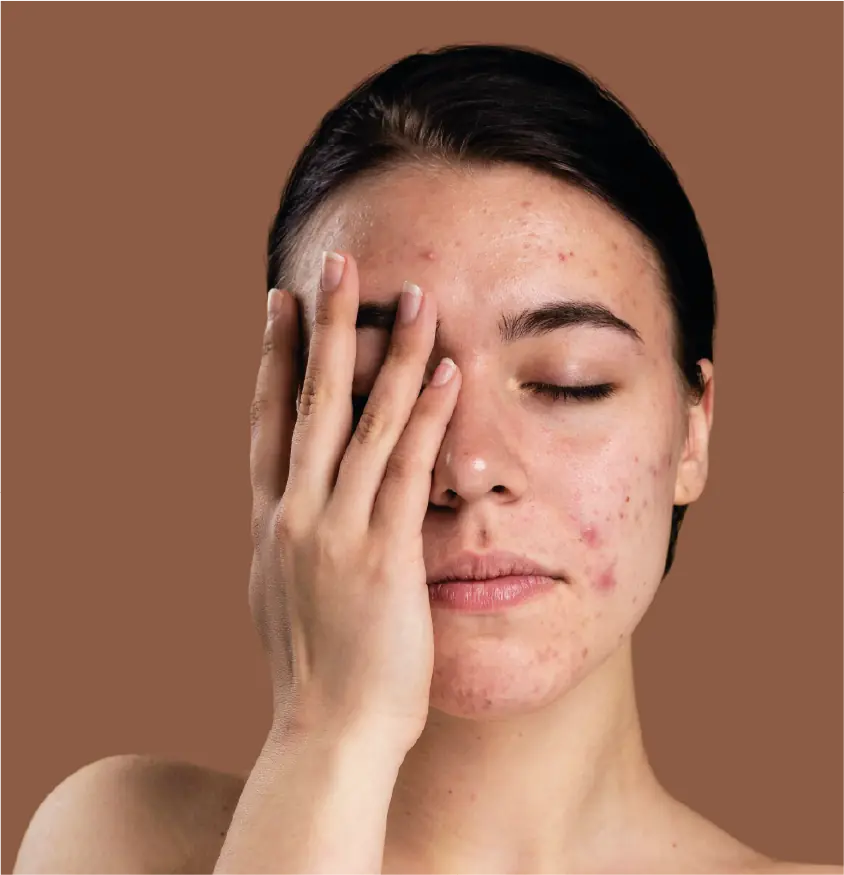
Common Types of Skin Pigmentation Disorders:
- Hyperpigmentation: This occurs when certain areas of the skin become darker than the surrounding skin. Common types include:
- Melasma: Often triggered by hormonal changes, pregnancy, or sun exposure.
- Age Spots: Also known as liver spots, these appear due to prolonged sun exposure.
- Post-Inflammatory Hyperpigmentation (PIH): Dark spots that appear after an injury or inflammation, such as acne.
- Hypopigmentation: This is when areas of the skin become lighter due to a reduction in melanin. Examples include:
- Vitiligo: A condition where the skin loses pigment cells, leading to white patches.
- Albinism: A genetic condition characterized by a lack of melanin in the skin, hair, and eyes.
- Pigment Loss due to Skin Damage: Scarring, burns, and other skin injuries can lead to loss of pigmentation in the affected area.
Causes of Skin Pigmentation Disorders:
- Sun Exposure: UV rays can trigger an overproduction of melanin, leading to dark spots and uneven skin tone.
- Hormonal Changes: Conditions like pregnancy, birth control pills, or thyroid issues can alter melanin production.
- Medications: Some drugs can cause pigmentation changes as a side effect.
- Inflammation and Skin Injuries: Acne, eczema, or trauma can lead to post-inflammatory hyperpigmentation.
- Genetics: Family history can play a significant role in skin pigmentation.
Benefits of Our Treatments:
- Effective Results: Noticeable improvement in skin tone and texture.
- Customized Plans: Treatments tailored to your specific skin needs.
- Non-Invasive Options: Minimal downtime and discomfort.
- Advanced Technology: Use of the latest techniques and equipment for optimal results.
- Expert Care: Professional and experienced dermatologists and skincare specialists.
Post-Care Instructions
- Sun Protection: Apply broad-spectrum sunscreen daily and avoid direct sun exposure.
- Gentle Skincare: Use mild, non-irritating products and avoid exfoliants for a few days.
- Hydration: Keep your skin well-moisturized and drink plenty of water.
- Avoid Picking: Do not pick or scratch treated areas to prevent scarring and infection.
- Follow-Up Visits: Attend scheduled follow-up appointments to ensure optimal healing and results.
MELASMA
What is Melasma?
Numerous lasers and light devices have been used in melasma with unsatisfactory results. Besides, lasers are not advisable as monotherapy in the treatment of melasma. Q-switched lasers (QSL), fractional lasers, ablative lasers, intense pulsed lights (IPLS), Chemical peels, and their combinations have all been used, but response is unpredictable. and the pigmentation frequently recurs.

Common Types of Melasma
- Epidermal Melasma: Involves increased melanin in the superficial layers of the skin.
- Dermal Melasma: Characterized by the presence of melanin deeper within the skin.
- Mixed Melasma: A combination of both epidermal and dermal types, with pigment in both layers of the skin.
Causes of Melasma
- Hormonal Changes: Pregnancy, birth control pills, and hormone replacement therapy can trigger melasma.
- Sun Exposure: UV rays stimulate melanocytes, leading to increased melanin production.
- Genetics: Family history can play a significant role in developing melasma.
- Medications: Some medications can cause pigmentation changes as a side effect.
- Skin Care Products: Products that irritate the skin can exacerbate melasma.
Benefits of Our Melasma Treatments
- Effective Results: Noticeable improvement in skin tone and reduction in melasma patches.
- Customized Plans: Treatments tailored to your specific skin type and needs.
- Non-Invasive Options: Minimal downtime and discomfort.
- Advanced Technology: Use of the latest techniques and equipment for optimal results.
- Expert Care: Professional and experienced dermatologists and skincare specialists.
Post-Care Instructions
- Sun Protection: Apply broad-spectrum sunscreen daily and avoid direct sun exposure.
- Gentle Skincare: Use mild, non-irritating products and avoid exfoliants for a few days.
- Hydration: Keep your skin well-moisturized and drink plenty of water.
- Avoid Picking: Do not pick or scratch treated areas to prevent scarring and infection.
- Follow-Up Visits: Attend scheduled follow-up appointments to ensure optimal healing and results.
UNderarm pigmentation
What is Underarm Pigmentation?
For many, dark armpits can be embarrassing. Dark skin under the armpits can prevent you from wearing sleeveless tops, swimwear, or exercising in public. Dark armpits, like scars and discolorations on other parts of the body, can lead to a lack of self-confidence and self-esteem.
Forearm whitening laser treatment uses a Q-switched laser to improve the appearance of dark armpits caused by pigmentation. This safe treatment is non-invasive and visible results are seen in several sessions with minimal downtime and no discomfort. QSwitched Nd: The YAG laser system can effectively target deeper skin pigmentation. This remedy is suitable when armpit pigmentation does not respond to topical whitening creams, epidermal-dermis mixed pigmentation, and primarily skin pigmentation. Laser energy breaks down melanin, which is carried away from the body by a healing reaction in several treatment sessions.
Common Causes of Underarm Pigmentation
- Shaving: Frequent shaving can cause irritation and lead to darkening of the skin.
- Friction: Rubbing of the skin against clothes can result in pigmentation.
- Deodorants and Antiperspirants: Certain chemicals in these products can cause skin darkening.
- Hyperpigmentation Disorders: Conditions like acanthosis nigricans, which is linked to insulin resistance, can cause dark patches.
- Infections: Bacterial or fungal infections can lead to pigmentation changes.
- Hormonal Changes: Pregnancy and hormonal imbalances can also contribute to underarm pigmentation.
Benefits of Our Underarm Pigmentation Treatments
- Effective Results: Noticeable improvement in skin tone and reduction in pigmentation.
- Customized Plans: Treatments tailored to your specific skin type and needs.
- Non-Invasive Options: Minimal downtime and discomfort.
- Advanced Technology: Use of the latest techniques and equipment for optimal results.
- Expert Care: Professional and experienced dermatologists and skincare specialists.
Post-Care Instructions
- Sun Protection: Apply broad-spectrum sunscreen to exposed areas if applicable and avoid direct sun exposure.
- Gentle Skincare: Use mild, non-irritating products and avoid harsh deodorants or antiperspirants.
- Hydration: Keep your skin well-moisturized and drink plenty of water.
- Avoid Friction: Wear loose-fitting clothes to reduce friction in the underarm area.
- Follow-Up Visits: Attend scheduled follow-up appointments to ensure optimal healing and results.
TATTOO REMOVAL
What is Tattoo Removal?
For many, dark armpits can be embarrassing. Dark skin under the armpits can prevent you from wearing sleeveless tops, swimwear, or exercising in public. Dark armpits, like scars and discolorations on other parts of the body, can lead to a lack of self-confidence and self-esteem.
Common Tattoo Removal Methods
- Laser Tattoo Removal: Uses advanced laser technology to break down the ink particles in the tattoo, which are then absorbed and eliminated by the body’s immune system.
- Surgical Excision: Involves cutting out the tattooed skin and stitching the area back together. This method is suitable for small tattoos.
- Dermabrasion: Involves sanding down the skin to remove the layers that contain the tattoo ink. This method is less common due to its invasive nature.
Causes for Tattoo Removal
- Regret or Change of Heart: Many individuals outgrow their tattoos or no longer resonate with the design.
- Professional Reasons: Some workplaces have strict policies against visible tattoos.
- Poor Quality or Fading: Tattoos can fade over time or might not have been well-executed initially.
- Life Changes: Personal events like marriage, name changes, or shifts in lifestyle can prompt tattoo removal.
Benefits of Our Tattoo Removal Treatments
- Effective Results: Significant reduction or complete removal of the tattoo.
- Customized Plans: Treatment plans tailored to the size, color, and age of your tattoo.
- Non-Invasive Options: Laser treatments are non-invasive with minimal discomfort.
- Advanced Technology: Use of the latest laser technologies for optimal results.
- Expert Care: Professional and experienced dermatologists and laser technicians.
Post-Care Instructions
- Keep the Area Clean: Gently clean the treated area and apply prescribed ointments.
- Avoid Sun Exposure: Protect the treated area from direct sunlight and use broad-spectrum sunscreen.
- Hydration: Keep your skin well-moisturized and drink plenty of water.
- Avoid Picking: Do not pick or scratch the treated area to prevent scarring and infection.
- Follow-Up Visits: Attend scheduled follow-up appointments to ensure optimal healing and results.
Scar Removal
What is Scar Removal?
Scar removal is a cosmetic procedure aimed at reducing the appearance of scars on the skin. Scars can result from injuries, surgeries, acne, or other skin conditions. While it’s often impossible to completely remove a scar, various treatments can significantly reduce their visibility and improve the skin’s texture and tone.
Fractional CO2 laser is ideal for people who like to minimize the appearance of acne scarring, fine lines, pigmentation, and other skin conditions
Common Causes of Scars
- Injuries: Cuts, burns, and other traumas can lead to scarring as the skin heals.
- Surgery: Surgical procedures often leave behind scars.
- Acne: Severe acne can result in pitted or raised scars.
- Infections: Skin infections can cause scarring as they heal.
- Skin Conditions: Conditions like chickenpox can leave permanent marks on the skin.
Types of Scars
- Hypertrophic Scars: Raised, red scars that form along the original wound.
- Keloid Scars: Thick, raised scars that extend beyond the original wound boundary.
- Atrophic Scars: Depressed scars, often caused by acne or chickenpox.
- Contracture Scars: Scars that tighten the skin, often resulting from burns.
Benefits of Our Scar Removal Treatments
- Effective Results: Significant reduction in the visibility of scars.
- Customized Plans: Treatments tailored to your specific skin type and scar condition.
- Non-Invasive Options: Minimal discomfort and downtime.
- Advanced Technology: Use of the latest techniques and equipment for optimal results.
- Expert Care: Professional and experienced dermatologists and skincare specialists.
Post-Care Instructions
- Keep the Area Clean: Gently clean the treated area and apply prescribed ointments.
- Avoid Sun Exposure: Protect the treated area from direct sunlight and use broad-spectrum sunscreen.
- Hydration: Keep your skin well-moisturized and drink plenty of water.
- Avoid Picking: Do not pick or scratch the treated area to prevent infection and additional scarring.
- Follow-Up Visits: Attend scheduled follow-up appointments to ensure optimal healing and results.
Laser Hair Removal
What is Laser Hair Removal?
Laser hair removal is a popular cosmetic procedure designed to remove unwanted hair from various parts of the body. This process uses concentrated light beams to target hair follicles, effectively reducing hair growth over time. It is a safe and efficient solution for achieving smooth, hair-free skin.
Common Areas Treated with Laser Hair Removal
- Face: Upper lip, chin, and sideburns.
- Arms and Underarms: Full arms, forearms, and underarms.
- Legs: Full legs or specific areas like thighs or calves.
- Bikini Area: Standard bikini line, Brazilian, and Hollywood styles.
- Back and Chest: Common areas for men seeking hair removal.
- Other Areas: Hands, feet, and other body parts as desired.
How Laser Hair Removal Works
Laser hair removal involves using a laser that emits light absorbed by the pigment (melanin) in the hair. The light energy is converted to heat, which damages the hair follicles, inhibiting future hair growth. Multiple sessions are typically required for optimal results as hair grows in cycles.
Benefits of Our Laser Hair Removal Treatments
- Long-Term Results: Significant reduction in hair growth after a series of treatments.
- Precision: Targets dark, coarse hairs while leaving the surrounding skin undamaged.
- Speed: Each laser pulse takes a fraction of a second and can treat many hairs simultaneously.
- Minimal Discomfort: Modern laser technologies are designed to minimize discomfort during the procedure.
- Versatility: Suitable for various skin types and hair colors.
Post-Care Instructions
- Avoid Sun Exposure: Protect the treated area from direct sunlight and use broad-spectrum sunscreen.
- Gentle Skincare: Use mild, non-irritating products on the treated area.
- Hydration: Keep your skin well-moisturized and drink plenty of water.
- Avoid Heat: Steer clear of hot showers, saunas, and hot tubs for a few days post-treatment.
- Avoid Hair Removal Methods: Do not wax or pluck hairs between sessions; shaving is recommended.
Warts and Skin Tags
What is Warts and Skin Tags?
Warts are small, rough growths caused by the human papillomavirus (HPV) that commonly appear on the hands, feet, and other areas of the body. They are typically harmless but can be unsightly and sometimes uncomfortable.
Skin tags are benign, soft, skin-colored growths that often occur in areas where the skin folds, such as the neck, armpits, groin, and eyelids. They are not dangerous but can be bothersome and aesthetically displeasing.
Common Causes of Warts and Skin Tags
- Warts: Caused by various strains of HPV, which can enter the skin through tiny cuts or abrasions.
- Skin Tags: Often develop due to friction from skin rubbing against skin, clothing, or jewelry. They are more common in people who are overweight, pregnant, or have diabetes.
Types of Warts
- Common Warts: Usually found on the hands and fingers.
- Plantar Warts: Appear on the soles of the feet and can be painful.
- Flat Warts: Smaller and smoother, often appearing on the face or legs.
- Filiform Warts: Long, narrow growths that typically appear on the face.
- Periungual Warts: Found around the nails and can affect nail growth.
Benefits of Our Warts and Skin Tag Removal Treatments
- Quick and Effective: Most procedures are quick and provide immediate results.
- Minimal Discomfort: Modern techniques minimize pain and discomfort.
- Safe and Precise: Treatments are performed by experienced dermatologists, ensuring safety and precision.
- Improved Appearance: Removing warts and skin tags can enhance your skin’s appearance and boost confidence.
- Prevent Recurrence: Effective removal reduces the risk of recurrence.
Post-Care Instructions
- Keep the Area Clean: Gently clean the treated area and apply prescribed ointments.
- Avoid Sun Exposure: Protect the treated area from direct sunlight and use broad-spectrum sunscreen.
- Avoid Scratching: Do not scratch or pick at the treated area to prevent infection and scarring.
- Hydration: Keep your skin well-moisturized and drink plenty of water.
- Follow-Up Visits: Attend scheduled follow-up appointments to ensure proper healing and monitor for recurrence.
HIFU?
What is HIFU?
High-Intensity Focused Ultrasound (HIFU) is a non-invasive cosmetic treatment that uses ultrasound energy to stimulate the deep layers of the skin, promoting collagen production and tightening the skin. HIFU is a popular alternative to surgical facelifts, offering a natural lift and improved skin tone without the need for incisions or downtime.
Common Issues Treated with HIFU
- Sagging Skin: Tightening loose skin on the face and neck.
- Fine Lines and Wrinkles: Smoothing out signs of aging.
- Jawline Definition: Enhancing the jawline and reducing jowls.
- Brow Lifting: Lifting the brows to open up the eyes.
- Décolletage: Improving the appearance of the chest area.
How HIFU Works
HIFU targets the deeper layers of the skin using focused ultrasound energy. This energy causes thermal coagulation points in the skin’s tissues, which triggers a natural healing process and stimulates collagen production. The result is a firmer, lifted appearance and improved skin texture. The treatment can be customized to address specific areas of concern and typically requires no downtime.
Benefits of Our HIFU Treatments
- Non-Invasive: No incisions or needles are involved.
- Minimal Downtime: Resume daily activities immediately after treatment.
- Long-Lasting Results: Results can last up to a year or more with proper care.
- Natural Lift: Achieve a natural-looking lift and tighter skin.
- Versatile: Effective for various areas including the face, neck, and décolletage.
Post-Care Instructions
- Avoid Sun Exposure: Protect your skin from direct sunlight and use a high SPF sunscreen.
- Keep the Area Hydrated: Use a gentle moisturizer to keep the skin hydrated.
- Avoid Heat Treatments: Refrain from using saunas, hot tubs, or intense heat on the treated area for a few days.
- Gentle Cleansing: Use a mild cleanser to wash the treated area.
- Follow-Up: Schedule follow-up appointments as recommended to assess results and plan any additional treatments.
CHemical Peel
What is Chemical Peel
A chemical peel is a skin-resurfacing procedure that uses a chemical solution to remove the outermost layers of the skin. This treatment promotes the regeneration of new, healthier skin, effectively addressing a variety of skin concerns such as fine lines, wrinkles, acne scars, uneven skin tone, and sun damage.
Types of Peels:
- Superficial peels, which use mild acids like alpha-hydroxy acid to gently exfoliate. It only penetrates the outermost layer of skin.
- Medium peels, which use trichloroacetic or glycolic acid to reach the middle and outer layer of skin. This makes it more effective for removing damaged skin cells.
- Deep peels, which fully penetrate the middle layer of the skin to remove damaged skin cells; these peels often use phenol or trichloroacetic acid.
Types of Chemical Peels
- Superficial Peels: Use mild acids like alpha-hydroxy acid to gently exfoliate the outer layer of skin.
- Medium Peels: Use trichloroacetic acid (TCA) or glycolic acid to penetrate the middle layers of skin.
- Deep Peels: Use stronger acids like phenol to deeply penetrate the skin, addressing more severe skin concerns.
How Chemical Peels Work
Chemical peels involve applying a chemical solution to the skin, which causes it to exfoliate and eventually peel off. The new skin that regenerates is usually smoother, less wrinkled, and more even in tone. The depth and strength of the peel depend on the type of peel and the specific skin concerns being addressed.
Benefits of Our Chemical Peel Treatments
- Improved Skin Texture: Smoother, more even skin texture.
- Reduced Fine Lines and Wrinkles: Diminishes the appearance of aging signs.
- Acne and Scar Treatment: Reduces acne breakouts and minimizes the appearance of scars.
- Enhanced Skin Tone: Addresses hyperpigmentation and sun damage for a more uniform complexion.
- Quick and Convenient: Short treatment sessions with minimal downtime, depending on the peel type.
Post-Care Instructions
- Avoid Sun Exposure: Protect your skin from direct sunlight and use a high SPF sunscreen.
- Keep the Area Hydrated: Use a gentle moisturizer to maintain hydration.
- Avoid Picking or Peeling: Let the skin naturally shed to avoid scarring.
- Gentle Cleansing: Use a mild cleanser to wash the treated area.
- Avoid Harsh Products: Refrain from using exfoliants or harsh skincare products until the skin fully heals.
- Follow-Up: Schedule any recommended follow-up appointments to monitor progress and address any concerns.
Microdermabrasion
How MDA (Microdermabrasion) treatment Works
During an MDA treatment, a handheld device with a diamond-tipped or crystal-tipped abrasive surface is used to gently remove the outermost layer of dead skin cells from the surface of the skin. This exfoliation process stimulates cell turnover and collagen production, resulting in improved skin texture, tone, and overall appearance.
Benefits of MDA Treatment:
Exfoliates Dead Skin Cells: MDA effectively removes dead skin cells, dirt, and debris from the skin’s surface, promoting a smoother, more even complexion.
Reduces Fine Lines and Wrinkles: By stimulating collagen production and promoting cell turnover, MDA can help minimize the appearance of fine lines and wrinkles, giving the skin a more youthful appearance.
Improves Skin Texture: MDA treatments smooth out rough skin texture, leaving the skin feeling soft, supple, and rejuvenated.
Reduces Hyperpigmentation: MDA can help lighten dark spots, sun damage, and hyperpigmentation, resulting in a more even skin tone.
Treats Acne and Acne Scars: MDA treatments can help unclog pores, reduce oil production, and improve acne-prone skin. They also minimize the appearance of acne scars for a smoother complexion.
Enhances Skincare Product Absorption: By removing the outer layer of dead skin cells, MDA treatments enhance the penetration and effectiveness of skincare products, allowing them to better target underlying skin concerns.
Derma Rollers
What is Derma Rollers
A derma roller is a skincare device equipped with fine, tiny needles that create micro-injuries on the skin’s surface. This process, known as microneedling or collagen induction therapy, stimulates the body’s natural healing response, promoting collagen and elastin production. Derma roller treatments are used to improve skin texture, reduce scars, and enhance overall skin appearance.
Common Issues Treated with a Derma Roller
- Acne Scars: Reducing the appearance of pitted acne scars.
- Fine Lines and Wrinkles: Smoothing out signs of aging.
- Hyperpigmentation: Evening out skin tone and reducing dark spots.
- Stretch Marks: Minimizing the appearance of stretch marks.
- Enlarged Pores: Reducing pore size for smoother skin texture.
- Hair Loss: Stimulating hair growth in cases of alopecia.
How Derma Roller Treatments Work
Derma roller treatments involve rolling the device over the skin to create controlled micro-injuries. This process triggers the body’s healing response, leading to increased collagen and elastin production. The result is firmer, smoother, and more youthful-looking skin. The procedure can be performed on various areas, including the face, neck, and scalp. Depending on the condition being treated, multiple sessions may be required for optimal results.
Benefits of Our Derma Roller Treatments
- Non-Invasive: Minimally invasive with no need for surgery.
- Quick and Convenient: Short treatment sessions with minimal downtime.
- Natural Results: Stimulates the body’s natural healing process for natural-looking improvements.
- Versatile: Effective for various skin concerns and applicable to different areas of the body.
- Enhanced Product Absorption: Improves the efficacy of topical skincare products.
Post-Care Instructions
- Avoid Sun Exposure: Protect your skin from direct sunlight and use a high SPF sunscreen.
- Keep the Area Clean: Gently cleanse the treated area to prevent infection.
- Moisturize: Use a gentle moisturizer to keep the skin hydrated.
- Avoid Harsh Products: Refrain from using exfoliants or retinoids for a few days post-treatment.
- Follow-Up: Schedule follow-up sessions as recommended for optimal results.
Laser Rejuvenation
What is Laser Rejuvenation
Laser rejuvenation, also known as laser skin resurfacing or laser skin rejuvenation, is a non-invasive cosmetic procedure that uses laser technology to improve the appearance of the skin. It effectively addresses a range of skin concerns, including wrinkles, fine lines, sun damage, acne scars, and uneven skin tone, by promoting collagen production and new skin cell growth.
Common Issues Treated with Laser Rejuvenation
- Fine Lines and Wrinkles: Smoothing out signs of aging.
- Sun Damage: Reducing the effects of sun exposure such as sunspots and pigmentation.
- Acne Scars: Minimizing the appearance of acne scars and other types of scarring.
- Uneven Skin Tone: Improving skin texture and tone.
- Large Pores: Reducing the appearance of enlarged pores.
How Laser Rejuvenation Works
Laser rejuvenation uses concentrated beams of light to target and treat specific skin issues. The laser penetrates the skin’s surface, causing controlled damage to the underlying layers. This process stimulates the body’s natural healing response, promoting the production of collagen and the generation of new skin cells. The result is smoother, firmer, and more youthful-looking skin.
Benefits of Our Laser Rejuvenation Treatments
- Non-Invasive: No incisions or injections required.
- Minimal Downtime: Quick recovery period, allowing you to resume daily activities shortly after treatment.
- Targeted Treatment: Precisely addresses specific skin concerns.
- Long-Lasting Results: Results can last for several months with proper care.
- Versatile: Effective for various skin types and conditions.
Post-Care Instructions
- Avoid Sun Exposure: Protect your skin from direct sunlight and use a high SPF sunscreen.
- Keep the Area Hydrated: Use a gentle moisturizer to maintain hydration.
- Avoid Harsh Products: Refrain from using exfoliants or harsh skincare products until the skin fully heals.
- Gentle Cleansing: Use a mild cleanser to wash the treated area.
- Avoid Picking or Scratching: Let the skin naturally heal to avoid scarring.
- Follow-Up: Schedule any recommended follow-up appointments to monitor progress and plan additional treatments if needed.
Vampire Face Lift
What is Vampire Face Lift?
A Vampire Facelift is a non-surgical cosmetic procedure that uses your body's own platelet-rich plasma (PRP) to rejuvenate the skin. By combining PRP with hyaluronic acid fillers, this treatment aims to enhance facial volume, improve skin texture, and restore a youthful appearance

How the Vampire Facelift Works
The Vampire Facelift involves drawing a small amount of your blood, which is then processed to extract the platelet-rich plasma. This PRP, rich in growth factors, is combined with hyaluronic acid fillers and injected into specific areas of the face. The growth factors stimulate collagen production and tissue regeneration, while the fillers add volume and smooth out wrinkles.
Benefits of Our Vampire Facelift Treatments
- Natural Rejuvenation: Uses your body’s own PRP to stimulate collagen and elastin production.
- Non-Surgical: No need for incisions or general anesthesia, with minimal downtime.
- Improved Skin Texture: Enhances skin tone and texture, reducing the appearance of fine lines and wrinkles.
- Volume Restoration: Adds natural-looking volume to areas that have lost fullness due to aging.
- Quick and Convenient: Short treatment sessions with immediate results that improve over time.
Post-Care Instructions
- Avoid Sun Exposure: Protect your skin from direct sunlight and use a high SPF sunscreen.
- Keep the Area Clean: Gently cleanse the treated area to prevent infection.
- Moisturize: Use a gentle moisturizer to keep the skin hydrated.
- Avoid Harsh Products: Refrain from using exfoliants or retinoids for a few days post-treatment.
- Follow-Up: Schedule follow-up appointments as recommended to assess results and plan any additional treatments.
Post-Care Instructions
- Avoid Touching the Area: Refrain from rubbing or massaging the treated areas for at least 24 hours.
- Stay Upright: Remain upright for 4-6 hours after the procedure to prevent the Botox from migrating.
- Limit Physical Activity: Avoid strenuous activities and exercise for 24 hours post-treatment.
- No Alcohol or Blood Thinners: Refrain from consuming alcohol or taking blood-thinning medications for 24 hours.
- Follow-Up: Attend scheduled follow-up appointments to monitor progress and discuss any concerns.
Botox
What is Botox?
Botox is a popular non-surgical cosmetic treatment that involves injecting a purified form of botulinum toxin into specific muscles to temporarily reduce the appearance of fine lines and wrinkles. It works by blocking nerve signals in the muscles where it is injected, causing a temporary reduction in muscle activity and resulting in smoother skin.
Common Areas Treated with Botox
- Forehead Lines: Horizontal lines that form across the forehead.
- Frown Lines: Vertical lines between the eyebrows, also known as “11” lines.
- Crow’s Feet: Lines that radiate from the outer corners of the eyes.
- Bunny Lines: Lines that appear on the nose when you wrinkle it.
- Lip Lines: Vertical lines around the mouth.
- Chin Dimpling: Irregularities on the chin’s surface.
- Neck Bands: Vertical bands that form on the neck.
How Botox Works
Botox injections temporarily block the signals from the nerves to the muscles. This prevents the targeted muscles from contracting, which in turn reduces the appearance of wrinkles and fine lines. The effects of Botox typically last for three to six months, after which the muscle activity gradually returns, and the wrinkles may reappear, requiring repeat treatments.
Benefits of Botox Treatments
- Quick and Convenient: Procedures are quick, typically lasting around 10-30 minutes.
- Minimal Downtime: Patients can return to normal activities immediately after treatment.
- Non-Surgical: No incisions or anesthesia required.
- Effective Results: Noticeable reduction in wrinkles and fine lines.
- Preventative Benefits: Regular treatments can prevent the formation of new wrinkles.
Post-Care Instructions
- Avoid Touching the Area: Refrain from rubbing or massaging the treated areas for at least 24 hours.
- Stay Upright: Remain upright for 4-6 hours after the procedure to prevent the Botox from migrating.
- Limit Physical Activity: Avoid strenuous activities and exercise for 24 hours post-treatment.
- No Alcohol or Blood Thinners: Refrain from consuming alcohol or taking blood-thinning medications for 24 hours.
- Follow-Up: Attend scheduled follow-up appointments to monitor progress and discuss any concerns.
Dermal Fillers
What is Dermal Fillers?
Dermal fillers are injectable treatments used to restore lost volume, smooth out wrinkles, and enhance facial contours. Made from substances such as hyaluronic acid, calcium hydroxylapatite, and poly-L-lactic acid, these fillers provide a non-surgical solution for rejuvenating the skin and achieving a more youthful appearance.
Common Areas Treated with Dermal Fillers
- Cheeks: Restoring volume and contouring the cheek area.
- Lips: Enhancing lip volume and shape.
- Nasolabial Folds: Reducing the appearance of lines from the nose to the mouth.
- Marionette Lines: Smoothing lines that run from the mouth corners to the chin.
- Under-Eye Hollows: Filling in hollows under the eyes.
- Jawline: Defining and contouring the jawline.
- Chin: Augmenting and shaping the chin.
How Dermal Fillers Work
Dermal fillers are injected into the skin to add volume and fullness, smoothing out wrinkles and enhancing facial features. Depending on the type of filler used, the results can last from six months to two years. The procedure is quick, with minimal downtime, and provides immediate visible results.
Benefits of Our Dermal Filler Treatments
- Immediate Results: Noticeable improvement in facial volume and contours right after treatment.
- Minimally Invasive: Non-surgical with minimal discomfort and downtime.
- Natural-Looking Enhancements: Achieve subtle, natural-looking improvements.
- Long-Lasting Effects: Results can last from six months to two years, depending on the filler used.
- Versatility: Suitable for various facial areas and concerns.
Post-Care Instructions
- Avoid Touching the Area: Refrain from touching, rubbing, or massaging the treated areas for at least 24 hours.
- Stay Upright: Remain upright for 4-6 hours post-treatment to allow the filler to settle properly.
- Limit Physical Activity: Avoid strenuous activities and exercise for 24-48 hours.
- Avoid Extreme Temperatures: Steer clear of saunas, hot tubs, and direct sunlight for a few days.
- Follow-Up: Attend scheduled follow-up appointments to monitor progress and discuss any concerns.
Semi Permanent Makeup
What is Semi Permanent Makeup?
Semi-permanent makeup, also known as micropigmentation or cosmetic tattooing, is a cosmetic procedure that involves implanting pigment into the skin's dermal layer. This technique enhances facial features such as eyebrows, eyes, and lips, providing long-lasting results that typically fade over time.
Common Areas Treated with Semi-Permanent Makeup
- Eyebrows: Creating fuller, well-defined brows with techniques like microblading and powder brows.
- Eyeliner: Enhancing the eyes with semi-permanent eyeliner for a natural or dramatic look.
- Lips: Adding color and definition to lips, achieving a natural or bold appearance.
How Semi-Permanent Makeup Works
Semi-permanent makeup involves using a specialized tool to deposit pigment into the skin, creating natural-looking enhancements. The procedure is similar to getting a tattoo but uses pigments specifically designed for cosmetic purposes. Depending on the area treated and individual factors, results can last between one to three years, with touch-ups recommended to maintain the desired look.
Benefits of Our Semi-Permanent Makeup Treatments
- Time-Saving: Eliminate the need for daily makeup routines.
- Natural-Looking Results: Enhance your features with subtle, long-lasting results.
- Customizable: Tailored to your desired look, from natural to more defined.
- Enhanced Confidence: Wake up with perfectly groomed brows, defined eyes, or luscious lips.
- Convenience: Ideal for those with busy lifestyles or allergies to traditional makeup.
Procedure Overview
- Consultation: Discuss your desired look, style options, and medical history with our specialists.
- Design and Mapping: Customized design and precise mapping of the treatment area to complement your features.
- Preparation: Application of numbing cream to ensure a comfortable experience.
- Pigmentation: Using a specialized tool, pigment is carefully implanted into the skin.
- Post-Treatment Care: Instructions are provided to ensure optimal healing and long-lasting results.
Post-Care Instructions
- Avoid Sun Exposure: Protect the treated area from direct sunlight and use sunscreen when outdoors.
- Keep the Area Clean: Gently cleanse the treated area to prevent infection.
- Moisturize: Use a recommended ointment or moisturizer to keep the skin hydrated.
- Avoid Harsh Products: Refrain from using exfoliants or harsh skincare products on the treated area.
- Follow-Up: Schedule any recommended touch-up appointments to maintain the desired look.


